#as if film stars are imitating us
Text
A TYPICAL DATE

tags: sfw, fluff, headcanons, enstablished relationship
characters: gojo, geto, nanami, naoya, inumaki, yuuta, noritoshi
GOJO SATORU
cat café
he's a cat dad and you're never going to convince otherwise. because of his job it's quite difficult for him to keep a pet in the house, he feels too bad leaving it all alone for days at the time (do not worry, the ball of fluff would have an automatic feeder and a self cleaning litter). so he gets his fix at a cat café. it's perfect, really: he can pet all the cats, and you can eat and drink to your heart's content while seeing him all happy and giddy.
GETO SUGURU
dinner and a movie
he's a wanted simple man, he's perfectly content setting the table while you stir fry the meat he had left in the fridge to marinate for the whole day. he'd fry up some popcorn after dinner and drizzle them in butter and salt. he loves it when you rest your head on his shoulder, especially if the movie turns out to be boring. he lets you fall asleep and does his best not to wake you at the end of the film. when nanako and mimiko make fun of him the day after for carrying you to the bed bridal style, he can only smile and ruffle their hair.
NANAMI KENTO
petit pâtisserie
he has a sweet tooth, sorry i don't make the rules. he doesn't like sickeningly sweet pastries, but a french press coffee and a slice of opéra cake are perfectly within his taste. he watches you eat an english scone with strawberry-rhubarb jam and clotted cream and sip on your darjeeling tea as he listen to you talk about whatever is on your mind. he notices some crumbs on your lower lip and tries to discretely let you know, but you're too absorbed in your own world to notice. so he gently wipes them away for you and notices a slight blush dusting your cheeks.
ZEN'IN NAOYA
michlin star restaurant
it's really not a date, it's more of an interview. he doesn't date just to date, he dates to marry. he needs to be the perfect heir for the zen'in clan, he needs a wife and a child. so he takes you to an incredibly expensive restaurant and grills you with questions. at the start it's not the most pleasant experience, but as the date goes on (if you answer his questions correctly) he loosens up and lets you speak freely. he doesn't even realize it, but he feels like he has a lot to prove, so once he decides that it's worth it he orderes his favorite wine (coincidentally the most expensive one) and shoos the waiter away to pour you a glass himself.
INUMAKI TOGE
arcade
please he loves the pinball machines, literally spends hours on them. you take turns at the claw machines to try and win each other a plushie (that riceball looks just like him? how?) and lose almost three thousand yen. he watches you play a shooter game and gets playfully annoyed when you don't listen to his tips. almost spills his coke all over one of the machines when you finally win your first game of the night. he offers you karaage to celebrate and you almost choke on the sauce when he imitates the panicked face you had during the game.
OKKOTSU YUUTA
picnic at the dog park
can he pet that dog? can he please pet that dog?? you bring the food and a table cloth, and he brings plates, cutlery, drinks and two different brands of dog treats. you could swear he spends more time looking at the dogs run around and telling you all about the specific breed than actually eating. a big fluffy maremmano runs towards him and almost knocks the picnic table over, but yuuta is ready: he grabs a duck skin treat from his pocket and hurls it to the other side of the park, but not before having pet the dog's head and having called him a good boy.
KAMO NORITOSHI
japanese tea house
he enjoys the quiet of the tea house's garden because he's not a kamo there, just noritoshi. he used to be partial to sencha tea but you insisted on ordering something different every time, and he's glad you did because he's a creature of habit, without you he wouldn't have discovered he actually prefers hojicha tea over anything else. he lets you order whatever you want, from dango to daifuku, even dorayaki once, but warabimochi remains his favorite.
#gojo satoru#gojo x reader#geto suguru#geto x reader#nanami kento#nanami x reader#naoya zenin#naoya x reader#inumaki toge#inumaki x reader#okkotsu yuuta#yuuta x reader#kamo noritoshi#noritoshi x reader#jjk headcanons#jujutsu kaisen#headcanons
1K notes
·
View notes
Text
PEDRO PASCAL X ACTRESS! READER
Summary: When a question during an interview makes you uncomfortable, Pedro comforts you.
Tags: no romance just hinting, can be read in a platonic way or not, a little bit of angst but with comfort.
I don't know why it took me so long to finish, and in the end I didn't even like it. But anyway, I hope you enjoy it! Sorry for the grammar mistakes.
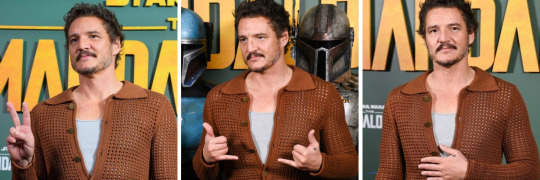
"That will be the last interview, then you are cleared for lunch." Your manager was notified as she checked the schedules one more time. "Can I call the next interviewer, or do you need a few minutes to prepare?"
Pedro put his cell phone away in his pants pocket as he stared at you finished your cup of coffee. "I think the sooner we start, the sooner we can have lunch." He suggested it, and you nodded in agreement. Your manager went to notify production.
"Good morning, I'm John, and I thought about asking a few questions and then playing a little game; is that okay with you guys?" He asked, when you nodded, he signaled to the cameraman and started recording.
"Today I'm joined by the lead actors of the new Netflix movie 'Caught Eye', the talented actor known for roles in series like The Mandalorian and Narcos, Pedro Pascal." John spoke, Pedro smiled, and made the peace sign with his hands. "And the actress making her debut, Y/N Y/LN. How are you guys doing?" You smiled with your mouth closed and waved to the camera.
"Always excited to share that film with the public." Your co-star said smiling.
"I heard that you guys recorded on an island where the ferry only came twice a day, is that true?" The interviewer asked, curious.
"Oh, yes, that's true. The production kept reminding us that we had to pay attention because the ferry only made two trips, one at seven in the morning and the other at ten at night. So we couldn't miss it because it wouldn't arrive until the next day; it was something about the tide." Pedro explained, moving his hands as if to exemplify what he was saying.
“Tell me, have you guys ever been late? And miss the ferry?" John asked.
You and Pedro exchanged glances before giggling. He placed his head on your shoulder as you struggled to hold back your laughter.
"Can someone explain to me what I'm missing?" The interviewer asked, after you stopped laughing.
"We missed the ferry only once." You stated, settling into your chair.
"It was on the last day of recording." Pedro added.
"And for a silly reason." You finished laughing.
"And what would that reason be? If you guys can tell?" John questioned curiously.
"There was a store that sold a variety of tropical fruit liqueurs, and I mentioned during one of the breaks in the recordings that I wanted to try the guava liqueur. But since the tapings ended late, the store was always closed." You commented. “The last day of recording, though, we were given an early release. We went to the store, but there was a long line, so I gave up and went to wait for the ferry. But in the end we ran to the stand when it was ten minutes before it arrived."
"What could go wrong." The interviewer joked.
"Yeah, what could go wrong? It was a very smart choice to go to a huge line to buy a bottle of liquor." Pedro joked, ironizing the situation. "We thought time was just like in Star Wars, that ten minutes is half an hour."
"After we paid for everything, we came back, and obviously the ferry had left." You concluded, rolling your eyes.
"When I went to check my cell phone, it was full of missed calls from the director and production asking, "Where the hell are we?" He said, imitating the director's voice.
"At least the liquor was good?" The interviewer asked.
"No." You spoke, laughing.
"It was horrible." Pedro complemented, making an exaggerated reaction of false sadness.Then the interview continued with more questions about the movie, the characters, the filming, and asking for some spoilers.
"So, Y/N, do you think the fact that you're acting with such a talented actor like Pedro Pascal in your first role made you nervous? Aware that maybe you would be overshadow?" The interviewer asked. "Or perhaps you were out of place because you didn't have the same level of acting?"
"Oh" You sighed anxiously. Pedro stared at you out of the corner of his eye. Your voice tone let him know that you were upset with the comment.
"Hey, that was rude and unnecessary of you to say." He caught the interviewer's eye. "Every member of the cast is equally talented; no one overshadows anyone. But if I were to pick someone, I would say that in certain scenes I may have been overshadowed by Y/N's brilliant talent. She delivered her all in every performance." You murmured a thank you to him as Pedro gently rested his hand on your leg, squeezing gently.
"I think it's normal for me to be nervous; as you emphasized yourself it's my first film. And a lot of the people in the cast I grew up watching, so it's a privilege to have this opportunity." You spoke up, trying to disguise your discomfort. "And I am very proud of the end result of our work.”
The rest of the interview passed like a blur; you shut down completely, only answering when questions were directed at you. When the interviewer left, you allowed yourself to release the tension. Well, Pedro had warned you that reporters can be too much.
"There aren't many varieties of food here; I think the best thing to do is to go for the classic pepperoni pizza, which you don't have..." Pedro interrupted his suggestion when he noticed you covering your face with your hands. “Hey, what's going on? What makes you feel this way?" He asked, standing next to you.
"Nothing, I'm fine." You insisted, using the back of your hand to dry your tears.
"Look, I'm not going to force you to tell me what's going on, but I want you to know that everything that interviewer said is not true; you're as talented as any actor in that movie." When placing his hand on your shoulder, Pedro spoke. “Of course, as time goes on, you'll get better at acting; you'll change and inspire other people.”He went on while rubbing your shoulder. “But right now, what matters is that you gave it your best effort; fame will come in due course.Many actors, myself included, take years to build up a career, and that's alright.”
You lifted your gaze to face him, your face a little more relaxed. "Can I hug you?"
“Come here.” Pedro spoke, pulling you into his arms. He held you up to him, and as he caressed your hair, you laid your head on the arc of his neck. You have no idea how long you stayed there, cuddled against one another. You thought he would have the best hugs, and you were right.
"You know, I think I'll have that pizza you recommended." You said, pulling away from the hug.
Pedro smiled. "As you wish." He said, entangling your arm in his while you looked for the pizza place. Every now and then, Pedro would crack a joke and look away to make sure you were okay. At the end of the day, you reflected on the events, and as uncomfortable as some moments were, you got through them together, and that was enough to put you to sleep with a smile.
1K notes
·
View notes
Text


Propaganda
Marsha Hunt (The Human Comedy, College Holiday, These Glamour Girls)—To be honest, I haven't had the chance to see a lot of her films, but she was an amazing person. A beautiful, popular actress during the 30s and 40s, Marsha was unfairly blacklisted during the Red Scare for speaking out against McCarthyism. Instead of letting that stop her, she focused her efforts on humanitarian work for causes such as world hunger, poverty, and pollution. She was also a support of same-sex marriage. Side note to any fellow fashion history nerds, she wrote a book on 30s-40s fashion. She stayed true to her beliefs through the years, and passed away at the age of 104 in 2022.
Fredi Washington (Imitation of Life, The Emperor Jones)—She was a beautiful woman whose movie career was struck short because she refused to pass as white, but she did get to star with the greats like Cab Calloway, Hattie McDaniel, Paul Robeson, Duke Ellington, Louise Beavers, etc. Being a person of moral and conviction is hot. Also, she knew ballet and was a beautiful dancer in general.
This is round 2 of the tournament. All other polls in this bracket can be found here. Please reblog with further support of your beloved hot sexy vintage woman.
[additional propaganda submitted under the cut.]
Marsha Hunt:
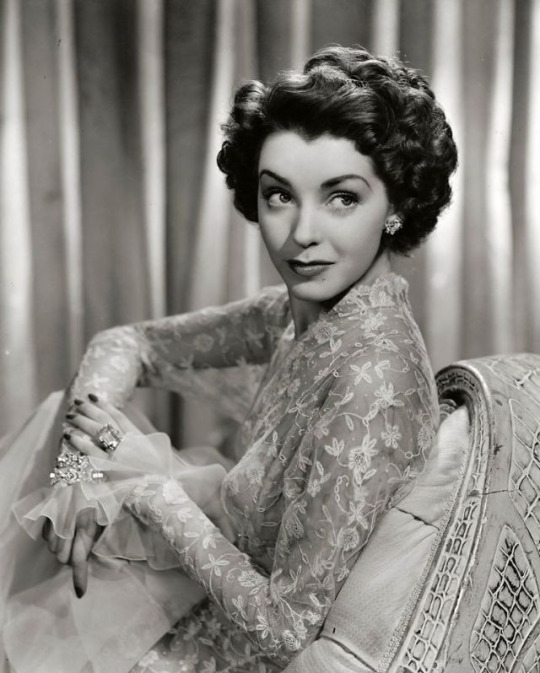
Marsha Hunt first signed with Paramount in 1935 at the age of seventeen, kicking off a prolific career as a beloved Hollywood star and fashion model. Her distinctive profile and facial structure earned her the nickname “Curly Lips”: “Besides a rounded forehead, almost no nose bridge, and a nose that curved upwards, even my lips curled up at the corners. Ronald Coleman and his wife Benita told me they used to describe me to each other as ‘Curly Lips.’ I decided that anything that helped two people I adored take notice of me would no longer keep me awake at nights.” (The Way We Wore, p.95) Marsha appeared in about seventy films over almost eighty years, including Hollywood Boulevard, College Holiday, Easy Living, These Glamour Girls, Irene, Pride and Prejudice, Blossoms in the Dust, Thousands Cheer, The Human Comedy, and many more. She was blacklisted during the McCarthy era for publicly defending Hollywood from the accusations of the House Committee on Un-American Activities, alongside Lucille Ball, Humphrey Bogart, Deanna Durbin, Henry Fonda, Judy Garland, Frank Sinatra, and many other members of the Hollywood community.
Fredi Washington propaganda:
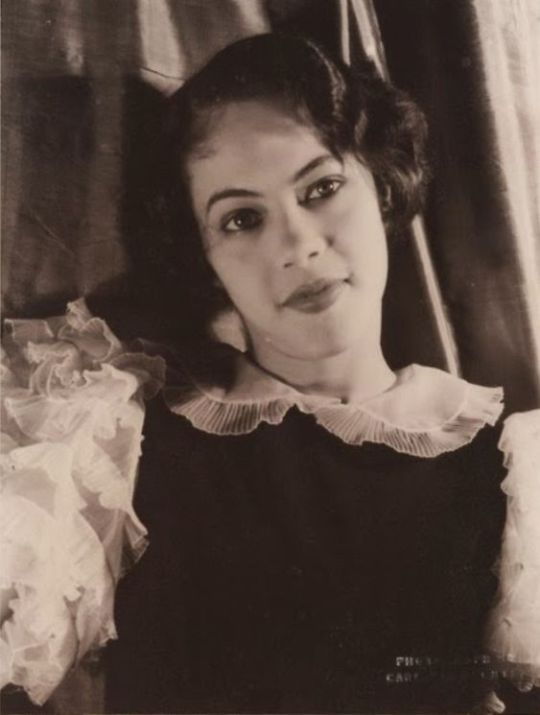
Short Hollywood career for being too light-skinned to play maid roles, but too brown to be cast opposite a white man in the time. Civil Rights activist. Worked with Paul Robeson to create the Negro Actors Guild. Heavy work in theatre and the NAACP.

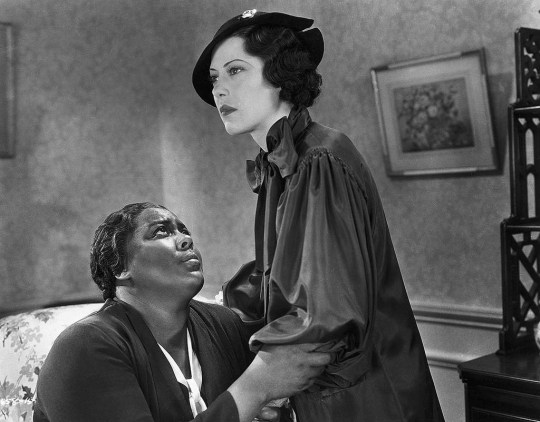

82 notes
·
View notes
Text
Michael Sheen's The Way echoes Tata steelworks reality
When Michael Sheen was filming clashes between steelworkers and riot police in his home town Port Talbot, little did he know 2,000 jobs at its steelworks would be at risk by the time it premiered.
"We had no idea when we were developing the story what would be happening at the steelworks when this came out," he said.
"It's incredibly unfortunate that the story we've written has come bizarrely very close to the truth."
Speaking ahead of The Way's premiere at Port Talbot's Reel Cinema, he insisted the three-part BBC drama - originally conceived in 2016 - was a fictional story and not about the Tata steelworks.
"But obviously, knowing the town, knowing the relationship the town has with the steelworks, knowing the insecurities and the anxieties that have always been there in my lifetime around employment and work there - that was part of what drew us to setting the story in this town," said Sheen, 55, who both directed and starred in the drama.
He said Port Talbot's steelworks was the "spiritual centre of the town" and "part of our DNA" and the news of job losses had been "devastating".
The Way is written by James Graham, created by Sheen, Graham and documentary filmmaker Adam Curtis and stars a number of Welsh actors.
The cast includes Steffan Rhodri (Steeltown Murders and Gavin & Stacey), Mali Harries (Hinterland), Sophie Melville (The Pact), Callum Scott Howells (It's a Sin) and Mark Lewis Jones (Men Up and Keeping Faith).
Episode one sees growing concern over the future of the steelworks, leading to protests, which later turn to riots.
Some take to the streets to join the fight, others frantically try to escape or hide in their homes as helicopters fly overhead.
The streets become a warzone and the town is locked down by armed police.
With Port Talbot facing an uncertain future, could life imitate art?
"It's not like we're saying 'this is what you should do as a result of what's going on' by any means, but obviously I have huge sympathy for the steelworkers," said Sheen.
"In no way is this a blueprint to how people should react, but you don't know do you? I have no idea how people are going to react.
"People will try and be as resourceful and as positive about it as they possibly can I'd imagine because that is the spirit of the people in this place - but at the same time you don't know and people are very angry as well."
For Sheen, "everything" is political.
A long-term champion of the NHS, in 2015 he was applauded for delivering a passionate speech to a pro-NHS march in Tredegar, Blaenau Gwent, and he is currently in rehearsal for a National Theatre production about NHS founder Aneurin Bevan.
In 2019, he sold property to bankroll the Homeless World Cup in Cardiff when funding for the £2m project fell through at the last moment.
In 2020, the actor, who was born in Newport and raised in Port Talbot, said he had handed back his OBE so he could air his views about the monarchy without being a "hypocrite".
In 2021, he said he had turned himself into a "not-for-profit" actor, using the money he earned from acting to fund projects.
He has been vocal on a range of issues from children in care to Welsh independence.
Was he trying to make a political statement in The Way?
"Everything is connected, everything happens for a reason, things are the way they are in this town and any town not just by chance, it's because of choices and various things... I think inevitably this was going to be a political story," he said.
"Part of the reason why we wanted to set it here... we needed to feel there was a great sense of discontent amongst a lot of people in the place, a lot of anxiety, a lot of feeling of not having their voices heard."
He said when people were made to feel that they were not being listened to and did not matter "that sense of frustration and anger can boil over".
Sheen made his name as an actor initially in the theatre before winning acclaim as a screen actor playing real people from Tony Blair, David Frost, Kenneth Williams and Chris Tarrant to lead roles in series including Good Omens, Masters of Sex and Staged.
In 2011, he directed and starred in a 72-hour epic theatrical production of The Passion, which moved around different locations across Port Talbot drawing huge crowds and critical acclaim.
It is perhaps unsurprising that he would choose to make his TV directorial debut in the town too.
"[The Way] was definitely very personal," he said.
"I feel like I knew what I was filming and I felt anchored and connected to what was going on."
Sheen now lives near Port Talbot with his partner Anna Lundberg and their two children Lyra and Mabli.
"It's somewhere I inevitably keep coming back to and it's an endless source of inspiration," he said of the town.
"It's the source of all my imaginative explorations really because it's my home.
"It's where I grew up, it's where all the most important things happened to me, it's where my family still lives, it's where I now live again and as I've got older I've realised more and more how important the beginning of my life was and all the opportunities people gave to me."
One of those people who gave him opportunities was Godfrey Evans, a drama teacher who helped shaped generations of actors through the West Glamorgan Youth Theatre and died in November, aged 82.
At the premiere across the road from the town's Aberavon Beach, Sheen dedicated the screening to both his former teacher and Port Talbot's steelworkers.
What are his hopes for those in his home town currently fearing for their jobs?
"Particularly at a time like this when there's so much anxiety and so much concern about the future it is so important to feel like you're supported and you can talk about what's going on and to find connection with other people who are maybe going through the same things," he said.
"We wish everyone the best and hope there's plenty of support for people in the future."
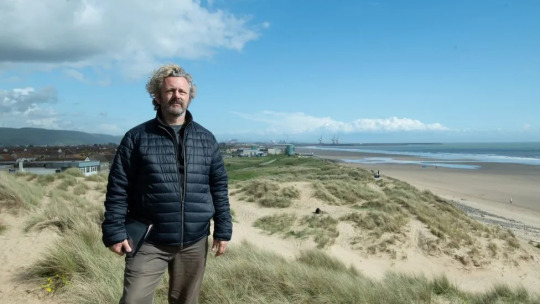
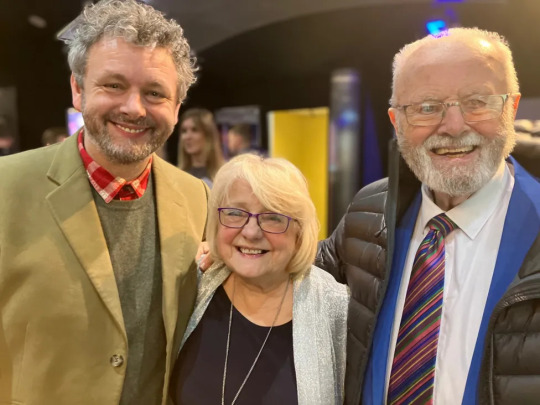
81 notes
·
View notes
Text
Bombastically Subtle: The Giggle

In my review for “The Power of the Doctor,” I talked about the power of lowering expectations. It’s good to approach Doctor Who with an open mind as it leaves room for being pleasantly surprised. One major truth for the Doctor Who fandom is how often we play ourselves with our expectations. We get it in our heads how something is supposed to be and we get mad that it isn’t that thing. That being said, there is a rational standard to be expected. Before “Journey to the Centre of the TARDIS,” aired, I had a small list of things I wanted to see in the TARDIS. Things which if included, would mean they didn’t waste the opportunity. I wanted to see a big gothic library. Check! I wanted to see the swimming pool. Check! I wanted to see a room that looked like the outdoors. Check! I wanted to see an M.C. Escher room like from “Castrovalva.” Well, three out of four ain’t bad. Speaking of three out of four, remember “The Celestial Toymaker”?
Of the 97 missing episodes of Doctor Who, three are from the four-part story “The Celestial Toymaker.” It would be four out of four, but the last episode “The Final Test,” was eventually returned to BBC in 1984 but wasn’t made available to the public until 1991. For years, all fans had left of this story was the Target novelisation and their imaginations. You could argue that “The Celestial Toymaker,” is a story which has benefitted from going missing. It enjoys a sort of mythic status no effects budget from 1966 could ever live up to. So when it was revealed that the Toymaker would be returning to Doctor Who in “The Giggle,” I saw it as an opportunity for them to finally give us the episode that has existed in our collective imagination for decades.
It makes sense that it took 57 years to return the Toymaker to the screen. It’s easier to write “The Doctor sees himself in puppet form,” than it is to film. Words may be the cheapest way to put big images in our heads, but we’ve got Disney money now. Doctor Who can finally afford to give the Toymaker the visuals he deserves. And the episode delivers on those visuals. It’s as mindbending and dazzling as you would expect for a trickster from the Island of Misfit Toys. Not only are the visuals impressive, but they’re also creative. That last bit is something people often forget. Style is everything. The Toymaker’s old-timey shop is beautiful and this design aesthetic carries over to visuals he produces. He feels appropriately out of time and timeless. I wanted to say this upfront because, honestly, there is so much more going on than stellar visuals.
One complaint I’ve seen consistently about the 60th Anniversary Specials is that they often seem like pale imitations of what came before. Just last week I compared “Wild Blue Yonder,” unfavourably to “Midnight,” but I had to concede to the fact that these specials are a bit of an homage to all of Doctor Who. Of course, there are similarities, it’s a celebration of 60 years of Doctor Who. That would be like complaining that they put a Santa robot in a Christmas episode. “The Star Beast,” harkens to alien invasion stories and evil dictators. “Wild Blue Yonder,” is like our “Midnight,” “The Edge of Destruction,” and “Heaven Sent,” type stories with a healthy dose of body horror. And “The Giggle,” is a bit more like “The Ultimate Foe,” “The Mind Robber,” or even “The Sound of Drums.” If these episodes are, as Russell T Davies said, the finale to the 2005 series, they’re a fitting send-off.
Much like “Wild Blue Yonder,” I found the introduction to “The Giggle,” to be the weakest section of the episode. Something about both scenes in both episodes had unnatural dialogue and poor pacing. It feels almost as though the episodes are both trying their best to get going as fast as possible. It makes sense when you consider that a major plot point is that the Doctor doesn’t take time to rest. Also, there is a lot of information to be imparted within three episodes. Regardless, I got a little nervous by Neil Patrick Harris’ over-the-top German accent bouncing off of Charlie de Melo’s confused face. But when Banerjee says to the Toymaker that his accent was slipping, I relaxed a bit. It’s like when Dorothy Vallens tears her bad wig off in “Blue Velvet.” You think “Oh thank god, they realise it’s unrealistic.”
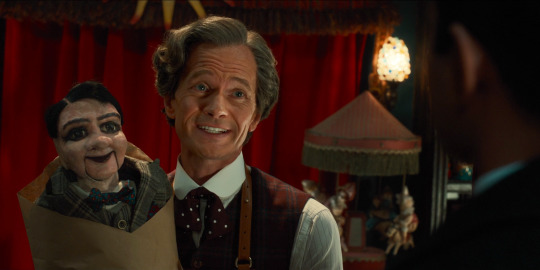
I love the inclusion of John Logie Baird into the story. Not only is he from Scotland (my newfound home), but an oft-overlooked person in history. Using the inventor of television to celebrate one of Britain’s oldest TV shows feels appropriate. RTD said in an interview that he started reading up on Baird while working on his miniseries “Nolly.” Initially, the only villain of the story was going to be the puppet, Stooky Bill, but Davies realised that might look a bit naff so he considered who might be the puppet master and the Toymaker was a natural fit. I love hearing how writers form stories from seemingly disparate elements. Had RTD never written “Nolly,” we would have probably not seen the Toymaker, which would have been a different 60th anniversary altogether.
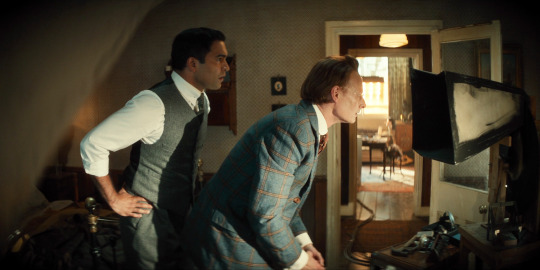
Thanks to things like “Doctor Who Unleashed,” and the commentaries, we’ve been given some intriguing insights into Davies’ creative process. Initially, he worried that the Toymaker was too ancient a character for modern fans to care about, but that never stopped Steven Moffat from introducing a new generation of fans to the Great Intelligence. He also took time to discuss the Toymaker’s racist roots. While I’ve never once thought of the Toymaker as yellowface, I can see how their use of the word “celestial,” and his Chinese silks might send the wrong message in this day and age. It’s funny then that that is also the reason he decided to give the Toymaker various accents, as a call back to his problematic nature. He is a villain after all. But is it really racist to make fun of Germans? I prefer my friend Taryn’s explanation that the Toymaker changes his voice often because the Doctor originally beat him by impersonating his voice.
With London at each other’s throats, it’s easy to see why UNIT would be relieved to see the Doctor. I half-expected Kate Stewart to slap the Doctor, but instead, she greets him with a hug. In the words of the Doctor- “This is new!” Now it’s been said before, so I’ll just agree that yes UNIT HQ looks like Avengers tower. We’ve already established that RTD is taking a page out of the Marvel playbook, no need to belabour the point. Back at UNIT, the Doctor is reintroduced to some familiar faces. We see Kate Stewart, Shirley Bingham, but most excitingly, Mel Bush. That’s right, I said “excitingly,” and “Mel Bush,” in the same sentence. I once met Bonnie Langford at a convention and I feel like she could tell I was lying when I said “I liked you in Doctor Who,” because in all honesty, I didn’t. But after rewatching “Paradise Towers,” and admiring Mel’s individuality in the face of the mocking Kangs, I thought “Maybe Hughie Lewis was right, it is hip to be square.” Furthermore, I knew RTD would do her right.
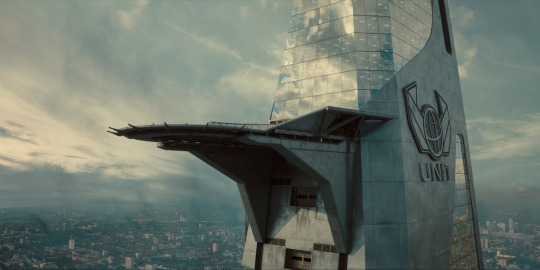
Something I’ve really enjoyed about the RTD2 era is how he has somewhat elevated the role of companion. Too often in the show's history have the companions been forced into the role of audience surrogate, fit only to ask the Doctor what’s happening and to get captured. Both Mel and Donna are rocking shit at their computer consoles. Finally, a writer who remembered Mel is a computer wiz, go figure! And of course, the best temp in Chiswick is leading the attack. But beyond being useful, he’s allowing the companions to have actual depth of emotion. Mel’s life doesn’t feel like a sad sack existence that landed her in a support group. She had a fun life with Glitz. Furthermore, it was a life she chose. There’s no baggage between her and the Doctor, just delight.

The Doctor learns that it’s not just Londoners losing their minds, but the whole world. Even our beloved Trinity Wells has fallen prone to the vitriol on her Fox News-esque talk show. The source of this anger is an arpeggiated laugh over the image of the first-ever televised face- Stooky Bill. This of course is the aspect that reminded me most of the “Utopia/The Sound of Drums/Last of the Time Lords” three-parter. Like the rhythmic heartbeats of a Time Lord, this signal has laid dormant on every television, computer, tablet, and phone screen for years. This is, of course, Russell T Davies’ comment on the current state of discourse on the internet these days. And in another way, it’s his comment on the state of the Doctor Who fandom lately. He seems well aware of the divisions in the fandom and it’s nice to see that aside from the sexists, racists, and transphobes, he’s interested in bringing the rest of us together, but I digress.
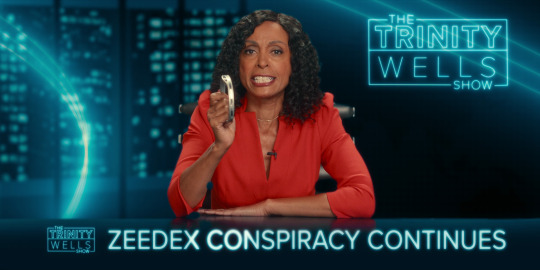
In what may be one of the most effective scenes in the whole episode, Kate Stewart removes her Zeedex, a device invented by the mysterious Vlinx to inhibit the effects of the giggle signal. After removing it, we watch in horror as our beloved Kate Stewart devolves into a paranoid ableist bigot who hates gingers. Jemma Redgrave gives a chilling and vulnerable performance that was hard to watch. I found myself choked up seeing her in this state, and watching her profusely apologise to Shirley afterwards was heartbreaking. That said, I loved Shirley’s reaction. It’s nice that RTD in his desire to portray marginalised people hasn’t forgotten that we’re not all helpless. Shirley understood the situation and she’s strong enough to take it. Even more, I loved it when the Doctor snapped at her with a bit of sass. It’s good to see Davies treating this new diverse cast as flawed and vulnerable people. He’s not ticking boxes, these are real characters.

The Doctor begins to get an inkling as to who they are dealing with. The words “puppetmaster,” and “toying with,” begin entering his vocabulary. The hairs on the back of his neck stand on end as something deep inside him is screaming “Toymaker!” Having correlated the mass outbreak of violence with the launch of a South Korean satellite, Kate gets permission from the Doctor to take out the satellite with a Galvanic beam. I loved how it was the Doctor’s job as President of the World to give the command. He must have hated that. Eagle-eyed viewers will remember galvanic radiation as the poisonous light from the planet Midnight. Once again RTD calls back to one of his best stories. Meanwhile, Donna hits Kate up for a job at UNIT netting her six figures a year and five weeks of holiday. Go Donna! While all of this is happening, Shirley has traced the original Stooky Bill broadcast back to SoHo in 1925. The Doctor and Donna pile into the TARDIS to follow this lead which takes them to the Toymaker’s shopfront.
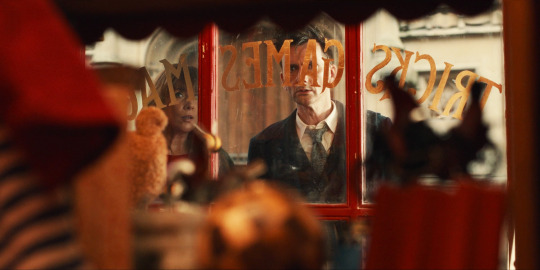
What I love most about including the Toymaker is that it has introduced magic into Doctor Who. The ‘70s gave us many occult storylines, but even then most of them could be explained with science. Seldom does Doctor Who give us a storyline where the Doctor is unable to explain what happened. We got the Beast in “The Impossible Planet/The Satan Pit,” and the haunted house from “The Chimes of Midnight,” but for the most part, magic has never been real in Doctor Who. Not even the Carrionites used actual magic in their word-based witchcraft. Perhaps RTD’s time working on “Wizards vs Aliens,” rubbed off on him. Either way, it’s an interesting way to breathe new life into Doctor Who. The Doctor hasn’t really ever dealt with actual magic and I am curious how it will affect him moving forward. Superman is one of the most powerful beings in DC comics, but along with Kryptonite, one of his greatest weaknesses is magic. Magic plays by its own rules.

As a being governed by magic, the Toymaker is bound to a set of rules. The Toymaker takes pride in his rules, so much so that when Donna implies he’ll cheat the Doctor, he looks genuinely offended. There is clear animosity between the Doctor and the Toymaker that is palpable throughout the story. The Doctor even antagonises the Toymaker by implying he is a slave to his rules of play. The Toymaker isn’t just interested in revenge, he wants to humiliate the Doctor in front of the person who loves him the most- Donna. He attempts to weaken her faith in the Doctor by illustrating the Doctor’s past failures to save his companions while highlighting the ways the Doctor justifies his failures. The one thing the Toymaker didn’t consider is that Donna knows this about the Doctor already. He can’t break her faith in a man she regularly puts in his place. This woman once called the Doctor “a thin line of alien nothing.” Do your worst, Toymaker, because Donna has already said it and more.

The real secret behind this episode’s success is in its subtlety, which is hard to imagine in a story where a man turns bullets into flowers while singing to the Spice Girls. Despite all of the big colourful chaos, the most effective moves are quiet. I mentioned in my review for “The Star Beast,” that Davies was more successful in his moments of subtlety than his big declarations, and here is no different. The Doctor and Toymaker play a simple card game. The Doctor loses this game but wins on the technicality that they are now even. There’s no way the Toymaker can allow for a tie, a winner must be decided. You can’t beat the Toymaker with bullets or Osterhagen Keys, but rather by playing his games. Underneath all of the expensive CGI and set design, it ultimately comes down to a game of wits. This is classic Doctor Who, “The Brain of Morbius” stuff.
That art of subtlety had seemed all but gone with the Chibnall era. I grew tired of the Doctor constantly knowing everything and never being out of her depth. It’s good to see the Doctor still has to solve things. It’s why I’ve enjoyed seeing Tennant skulking around being a detective. It’s why people always harp on about “show don’t tell.” It’s better to see how the Doctor slowly pieces things together than for the Doctor to tell us upfront. Knowing everything is not what makes the Doctor clever. Knowing nothing, having no plan, and discovering the path is far more gratifying to see. Ultimately it comes down to Davies having a better understanding of the Doctor as a character. The Doctor is flawed, vain, aloof, and prone to getting frazzled. Its his ability to soldier on that makes him special. The Doctor’s strength isn’t in knowing everything, it’s in knowing his limitations. You can’t learn if you have everything figured out.
While we’re on the subject of subtle changes and Chibnall, it might be worth it to discuss how this story addresses “The Timeless Children,” because I’ve seen zero people talking about it. When the Toymaker flashes the gold tooth in his disturbingly toothy grin, he tells us a little more than the Master’s fate. In a blink-and-you-miss-it line, he implies that he turned the Doctor’s timeline into a jigsaw puzzle. It’s such a subtle moment that it’s not surprising that most people missed it. But think for a moment- what recently turned the Doctor’s life into a convoluted mess? The Timeless Child storyline, of course. I love this line because it does two things. First, it allows the people who enjoyed “The Timeless Children,” to continue on in their enjoyment. Secondly, it allows those of us who disliked it to compartmentalise the storyline into something that finally made sense as a plan devised by a villain. If you ever wondered why the Timeless Child storyline was necessary, you now have a canon explanation- it wasn’t.
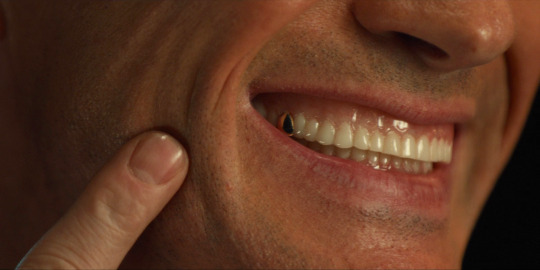
Unable to foresee the Doctor’s clever escape clause or Donna’s ability to bash a doll against a wall (love love loved that by the way), the Toymaker decides to change the playing field from his Toyshop to UNIT HQ. Neil Patrick Harris seems to be having the time of his life terrorising UNIT to the tune of “Spice Up Your Life.” At first you think “Oh how funny,” and then you see Mel take a tumble and you think “Woah man, that’s an elderly woman there!” As he gleefully turns two soldiers into a pile of colourful plastic balls, the act is no longer cute. The Toymaker is a horrifying monster with no conscience. Our lives are playthings in his hands and he must be stopped.

This scene illustrates beautifully the exciting possibilities of a magical Whoniverse. The Brigadier once famously quipped “You know, just once I'd like to meet an alien menace that wasn't immune to bullets.” Turning bullets into flowers certainly fits the bill, but it begs an even deeper question- how do you fight an enemy that is immune to science? Kate Stewart took great pride in reforming UNIT to be more science-based, but magic doesn’t care about facts. Magic rewrites reality. The Doctor tries to comfort Shirley by explaining that the Toymaker can change atomic matter with his mind, but admits that even that is a poor explanation. Both the Doctor and UNIT are in new territory. It really ups the danger and makes you wonder how the Doctor will adapt. I said in my review of “The Star Beast,” that the sonic screwdriver was like a magic wand and perhaps it may need to become one! Sorry, War Doctor, it’s no longer a scientific instrument.
Exasperated by the Doctor’s trickery, the Toymaker shocks by shooting the Doctor with the Galvanic beam, stating that he wants to play the final game with the next Doctor. This jumpstarts a new regeneration, but as we all know, it’s not your usual regeneration. But before we get into that, I would like to discuss the moments leading up to that infamous moment because some interesting stuff happens. Having Donna and Mel join the Doctor’s side was exciting because we’re so used to the Doctor regenerating in a blast of energy powerful enough to destroy TARDIS consoles and Dalek ships. It’s easy to forget that the Doctor used to regenerate surrounded by his friends. So there the Doctor stands, surrounded by what the Eleventh Doctor would refer to as “the ultimate ginge.” I think we all sort of expected to hear the Doctor say something like “I don’t want to go,” or “I’m ready to go,” and I applaud RTD for avoiding both in favour of a far more appropriate “Allons y!”
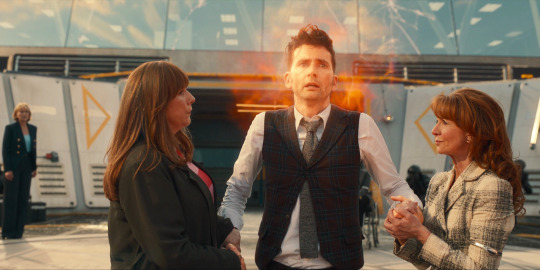
Now, if you’re a terminally online Doctor Who fan like myself, you’d probably read the leak about bi-generation and were therefore not surprised. I kind of regret it because it turned out to be true. I am so used to “leaks,” and “fan theories,” being wrong that I expected the same here. However, part of me is somewhat glad I read the leak as it gave me time to think about the concept. I had seen people immediately hate the idea, so I think a part of me decided to be fair. After all, if you read just the synopsis of any story, divorced of all context and tone, you might also say “That sounds terrible.” In context to the rest of this episode, and what came after, bi-geneation was an absolute joy to behold.
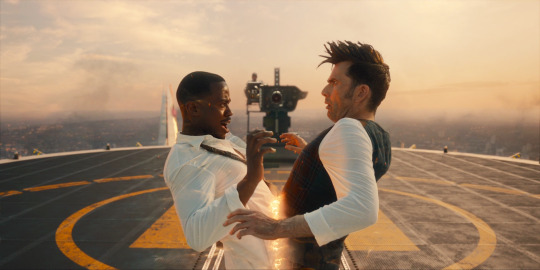
Usually when we get a regeneration, we get maybe 20 seconds to enjoy the new Doctor and then have to wait a few months to see more. But here we not only get to meet Ncuti Gatwa’s Fifteenth Doctor, we get to see him in a mult-Doctor episode with David Tennant! What a treat. Immediately I took to Ncuti as he tells the Fourteenth Doctor to push and then admits he doesn’t know that it will work. This is all new to him as well. I said above that I like when the Doctor is slightly out of his depth, and this is no exception. I will say it’s very lucky for both of them that one of them got the pants and the other got the trousers. Can you imagine that scene playing out with one of them having a Winnie the Pooh thing going on? However, they did miss a chance to call back to the Twelfth Doctor by not giving the Doctor question mark underpants. Oh well.
After watching this episode I asked Taryn what she thought about the Fifteenth Doctor and she told me that she felt it was too early to tell. I then pointed out that while we don’t fully know his personality yet, there was no point during which he didn’t feel like the Doctor. Ncuti takes to the role like a fish in water. He is the Doctor and I cannot wait to learn more about his personality. But first, we have a Toymaker to banish. Now I’ve seen people complain that a game of catch was a disappointing climax to the story, but I disagree. Both of the games the Doctor plays against the Toymaker are simple. Which card face is higher? Can you catch the ball without dropping? It’s nice to have a simple solution against a backdrop of heavy special effects. There are some comical moments such as when Fifteen throws the ball as if he’s trying to win against Fourteen. Also just seeing Ncuti run around in his pants was very funny. Ultimately it is the Toymaker who drops the ball. The Fourteenth Doctor takes his prize in the form of banishing him from our universe forever, but not before the Toymaker warns of his minions spilling into our reality. I was reminded of the “Babylon 5” spin-off “Crusade,” where the Shadows of B5 had been defeated, but their minions continued to plague the galaxy. Or if you’re a Tolkien nerd, it’s like when Sauron continued the work of Morgoth. It’s very exciting stuff.

They continue to set things up for future episodes. They call back to the salt thing from “Wild Blue Yonder,” when Kate orders her men to encase the Toymaker’s box in salt. They also give us a hint of future Master appearances when a mysterious hand with cherry red nail polish retrieves the Toymaker’s tooth. Is it just me or was that lady floating? Because I can’t tell where she would have been standing. But most exciting of all would be the implications of bi-generation and the Fifteenth Doctor’s prize of splitting the TARDIS. According to Davies, he sees this as something that happens across every regeneration. Now every Doctor goes on to have further adventures with their own TARDIS. I’ll be honest, I like this idea less, but that’s mostly just because it’s a bit messy. But why I like it is that it makes a case for its existence. Doctor Who has always been slightly metafictional. Do you need to replace an actor? Well, now the Doctor’s body can change. But this has also introduced a problem into the show which is that if an actor gets too old to play their Doctor, you have to come up with some weird excuse as to why they now look old and bald. But not anymore! While the concept of time streams would have been a cleaner and more wibbly wobbly way to approach this issue, I’m fine with this explanation. It serves a purpose and fixes one of the show’s oldest conundrums.

One aspect the fandom still seems a bit murky on is whether or not the Fourteenth Doctor will still go on to become the Fifteenth Doctor. I’ve seen some people wonder if the Fourteenth Doctor might go on to become the Currator. But I like to think it’s more like a Clara thing where he’ll eventually return to his original point of death to bi-generate into Ncuti Gatwa. One reason I think this is because the Fifteenth Doctor feels at peace with himself. I like to imagine this is due to living a life with the Noble-Temple-Mott family. Something inside the Doctor heals and he’s eventually ready to get back out there and travel like the good ol’ days. Truthfully though, neither scenario would really bother me. With Donna now working at UNIT and Fourteen sticking around I expect we’ll see them again, but at this point, I’m ready to watch Ncuti dazzle us for a bit.
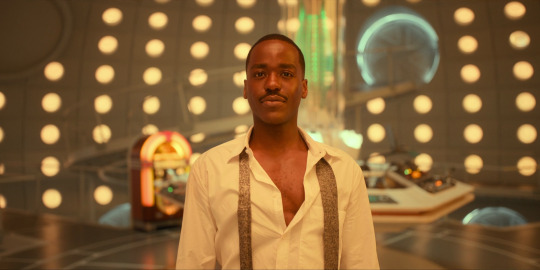
The epilogue with Donna’s family was such a nice and necessary scene. While Ncuti had since become the new Doctor, he wasn’t yet the current Doctor. We still needed to say goodbye to the Fourteenth Doctor. A good and proper goodbye. Earlier in the episode, Donna mentions to the Doctor that he never seems to rest, but here he seems at peace. It’s funny how it took 15 years to explore how the Tenth Doctor could have been “so much more,” but here it is. The real reason he came back was to retire, to have a family, to find peace. It’s as though every regeneration still swimming around in the Doctor’s mind is finally able to relax. We do however get a hint that it’s not all sunny days and lemonade. If you read Rose Noble’s Magic Card, it mentions she is ready for adventures in her own right. Seeing as she is known to have the occasional trip to Mars with Uncle Doctor, I suspect we’ll see her in the TARDIS sometime if not Big Finish.

Back in his own fully accessible TARDIS, the Fifteenth Doctor is finally the current Doctor. He runs around his TARDIS consoles flipping switches and having the time of his life, ready to get out there and show the universe what he can do. And what a joy it is to see, is it not? I had been very nervous about this episode because I was worried about where Doctor Who would end up in the end. So much had changed during the Chibnall era and not all of it was for the better. The future of the show felt very shaky and uncertain. Ultimately I was hoping the show could once again find some sort of equilibrium and I feel it has. Doctor Who feels like it’s finally at a point where it can comfortably move forward. I can’t think of anything better to say now than “Allons y!”
#Doctor Who#Fourteenth Doctor#David Tennant#Fifteenth Doctor#Ncuti Gatwa#Catherine Tate#Donna Noble#Neil Patrick Harris#The Toymaker#The Giggle#Russell T Davies#RTD#RTD2#60th anniversary specials#60th anniversary#UNIT#Kate Stewart#Rose Noble#yasmin finney#BBC#TARDIS#bi-generation#bi generation#Shirley Anne Bingham#ruth madeley#Jemma Redgrave#timeagainreviews
62 notes
·
View notes
Text
also for all my starmora posting and texting if u have had to suffer that, the thing that struck me most when leaving gotg 3 was. nebula/mantis. like. obviously starmora was always gonna murder me and it DID and also rocket being the heart of the story was gonna fuck me up and it DID but the thing that absolutely blindsided me with how much it meant to me was nebulantis, especially because of that One Scene on the flying pyramid
but every scene built up to it!! like. starlord’s “she calls me star lord when she’s mad at me” met by mantis’ grumpy little “she’s always mad at everyone”, the way mantis complains to drax about how she can’t know things if nobody tells her after nebula (and gamora, but nebula is the one that makes her mad) yells at her about the spacesuits, the “why do you criticise everything? it’s a different sound” “uh, no it isn’t. [imitates mantis] eurgh, dying, eurgh, dumbass. it’s the same sound!”
and all of that leads to that moment on the ship, when nebula shoves drax and mantis yells at her that she doesn’t have the right to push him, and nebula fires back at her about always supporting weakness. and then mantis says the thing that has haunted me since watching lmao: “fine! i don’t care! i know you have to find fault in everyone else to feel better about yourself – so find fault in me! but you don’t have the right to push him!”
and the way nebula just. stares at her. mantis saying he loves us and makes us laugh, how is that weakness? mantis saying he has sadness but he is the only of you who doesn’t hate himself. so i don’t care if he is stupid. LIKE. it just slams right into me i think bc her entire life, nebula’s value has been determined by her success. she never won against gamora, so she was tortured, pulled apart piece by piece, thanos always saying it was to help her get ‘better’. nebula who fulfils EVERY ROLE in the team—not so much emotional active support but caretaker, pilot, living weapon, ultimate defender, local robot—because that’s what she has to do to be worth keeping around. nebula, whose self-worth issues were built into her from childhood.
and here is mantis saying who cares that someone isn’t the best if they love you, if they make you laugh. who cares about strength when someone matters to you? what is strength to love? what is it?
and then, when rocket’s voice comes through the intercom and nebula stops still, swallows, says “rocket?” in that voice biting back all the emotions she doesn’t usually let herself express, and the camera pans to mantis looking at her. to mantis seeing nebula on the other side of grief, what it looks like for her to finally exhale this held breath she’s had, bc rocket was the only person she had for five years (“i’m family,” gamora says; “so is he,” nebula replies levelly), and he’s going to be okay. it’s this amazing one-two moment of two people who have been ostensibly teammates but really at odds the entire movie look at each other and really see each other, really understand what the other stands for, who they are. god!!!!
and then when drax and nebula form a little shield in front of mantis at the end when they’re all in the pit and mantis steps past them both, despite nebula’s protests. at the very end, when nebula decides to lead the city; this girl who is a weapon, laying down her arms to try give these little girls the childhood she never had. at the very end, when mantis strikes her own path—the girl who always ‘finds weakness in others and supports it’, leading her three companion beasts into the unknown universe, just to find herself.
and that last moment, when mantis says to all of them, “i love you all,” with that half beat before all, and she nods at nebula. it’s just. holy fuck. there were some real masterclasses in relationship dynamics and development in this film, but nebula & mantis were largely an undercurrent beneath the surface, but no less impactful, no less poignant for it. god. god
#nebula gotg#mantis gotg#mantis x nebula#gotg3#gotg v3#gotg vol 3#mcu#i love this movie so much lmao can you tell…#i just! [punches air] fucking ! love ! dynamics !
153 notes
·
View notes
Text
One thing I keep asking myself now in relation to Ahsoka is: does Filoni like samurai films? Does he have thoughts about any of them? And if he does, why isn't any of it in the show?
Like, regardless of anyone's views on The Last Jedi, Rian Johnson engaged with the genre. Rather than just pull from things that had already been used by Star Wars, he explored. He understood the themes of Rashomon and Three Outlaw Samurai, and understood why those films work. You can tell that he has a relationship to and appreciation for the material. He borrows Rashomon's "three versions of the story" and echoing that film, the truth lands in a murky in-between exposes a critical error by a character, but also incites them to an act of real moral courage. The energy of Three Outlaw Samurai, meanwhile, comes through in the slovenly DJ and the frantic, scrappy melee combat.
In the same way, Andor and Rogue One are applying more than just the aesthetics of espionage thrillers and modern war movies to SW (also they understood what those aesthetics are for). For that matter, TCW's Umbara arc used Vietnam War film nods pretty well.
The Mandalorian, I think, has increasingly lost the sense of having anything to say with its Western elements, and in Ahsoka it's even more frustrating. Characters pose with their lightsabers in ways that mimick the likes of Toshiro Mifune, there are musical echoes, the framing vaguely evokes those films at times... yet it stops there, at the surface. They're not doing anything more than The Jedi borrowing frames from Yojimbo back in Mando S2. It begins to feel performative, doing homage to the things which influenced Lucas because they influenced Lucas (and missing the fact that Lucas adored these films because they are terrific works of art).
And that doesn't even get into how much of Kurosawa's actual style isn't imitated at all here. Kineticism, the thing which the master did better than basically anyone else, is pretty much absent, let alone his dramatic use of weather and smoke.
The reason I'm harping on about this is that Filoni and his writers room could really have made hay if they dug into these stories, because they would've found themes that informed the story they were ostensibly setting out to tell. Plenty of Kurosawa films are about ronin (sometimes left masterless by a war that destroyed their clans) and their ambiguous, often fraught relationships with the rest of the world.
Seven Samurai, Yojimbo and Sanjuro all get into this stuff. The former also asks searching questions about what place there is for a warrior in a land at peace, which Masaki Kobayashi's Harakiri explores through a much darker and more cynical lens. All of that feels extremely applicable to an Ahsoka who is meant to be scarred by her experiences and feels a gap in her life, where so much of the Jedi's traditional role as peacekeepers and protectors was meant to go. (There is a similar struggle at the heart of David Kirk's wonderful Musashi Miyamoto novels).
But instead we end up with this very shallow attempt at doing homage, which comes out as rather disrespectful in itself when you break it down.
60 notes
·
View notes
Text
I’ve been thinking a lot about Art lately. What it means, and what it means for people to create it, and what it means to be derivative, and what machines might do with it and the fact machine generated art (also called AI art in some circles) makes a hodgepodge, and the statement “imitation is the sincerest form of flattery.” Because what is machine generated art but imitation? Surely this is flattery?
Some months ago I had the opportunity to go to the Portland Symphony. It was for nerd reasons, the performance list was the battle between Star Wars vs Star Trek, but the conductor hadn’t arranged solely for pieces from Star Trek, or solely for John Williams. He included the theme from ET, and Thus Spake Zarathustra and Blue Danube from 2001, and then the music of a science fiction film from the 1930s no one in the audience had ever heard of before. And somewhere in the middle, he included one additional piece. It was his own, the first of his original compositions he’d ever had performed for an audience.
And it was lovely! It was an absolutely delightful piece of music, and he’d structured the show well enough that we could hear the pieces he’d incorporated that were from the Star Trek theme, that were in conversation with Michael Giacchino’s new Star Trek theme, that were borrowed from Strauss, that had John Williams oozing from the semiquavers and the rests.
It was imitation, and it was derivative, and it was beautiful and full of heart. It was the answer to why imitation is the sincerest form of flattery — it’s because that level of imitation isn’t saying “I couldn’t come up with anything on my own so I borrowed yours” it’s saying “the art you created so moved me that I could not imagine trying to express this piece of my soul without incorporating this thing you created into it.”
When people select the art that we imitate and that we derivate from, it’s an expression of love. It is an acknowledgement that the other has created something beautiful that spoke to us that we now can’t live without.
When computers do it, it’s just soulless. It’s matching defined bits and slapping them together. It isn’t an act of art or love (art and love are, of course, the same thing in their own way) it’s simply… mimicry. Heartless mimicry. It cannot replace actual art and everyone who tries to pretend it can is my enemy.
130 notes
·
View notes
Text
Louise Beavers

Louise Beavers (March 8, 1900 – October 26, 1962) was an American film and television actress who appeared in dozens of films and two hit television shows from the 1920s to 1960. She played a prominent role in advancing the lives of Black Americans through her work and collaborated with fellow advocates to improve the social standing and media image of the Black population.
Beavers was born in Cincinnati, Ohio to school teacher Ernestine (Monroe) Beavers and William M. Beavers, who was originally from Georgia. Her mother's illness caused the family to move to Pasadena, California.
In Pasadena, she attended school and engaged in several after-school activities, such as basketball and church choir. Her mother also worked as a voice teacher and taught her how to sing. In 1920, Beavers graduated from Pasadena High School. She then worked as a dressing-room attendant for a photographer and served as a personal maid to film star Leatrice Joy.
Beavers' acting career began as a member of the Lady Minstrels, a group of young women who staged amateur productions and appeared on stage at the Loews State Theatre. Charles Butler, an agent for African-American actors, saw one of her early performances and recommended that she audition for a film role.
Beavers was initially hesitant to audition for film roles because of the negative portrayal of blacks in film. She once said, "In all the pictures I had seen… they never used colored people for anything except savages." However, she won a role in the film Uncle Tom’s Cabin (1927) and went on to play stereotypical black roles such as those of a slave, a mother figure, a maid or domestic servant. With Claudette Colbert in Imitation of Life (1934)
After playing the role of Julia, the maid and mother figure to a young white woman, in Coquette (1929), Beavers gained more attention for her work and was able to transition to less stereotypical roles. Beavers played Delilah in Imitation of Life (1934), again in the role of a housekeeper, but instead of the usual stereotypical comedic or purely functional role, Delilah's storyline constitutes a secondary parallel plot in which her problems are given considerable emotional gravity. Some in the media recognized the unfairness of Hollywood's double standard regarding race. A contributor to California Graphic Magazine wrote: "the Academy could not recognize Miss Beavers. She is black!"
In 1936, Beavers married Robert Clark, who later became her manager. Beavers and Clark later divorced.
Beavers played the lead role in the film Reform School (1939), once thought to be a lost film, as a forward-thinking probation officer who becomes the superintendent of a reform school and implements major changes.
In the film Holiday Inn (1942), Beavers performed a song during a minstrel show number celebrating Abraham Lincoln's birthday. Because the number features Bing Crosby and others in blackface, some consider it racially offensive and it is often excised from television screenings of the film. Lobby card for the Million Dollar Productions film Life Goes On with "Harry M. Popkin Presents Louise Beavers" logo inset
As Beavers' career grew, some criticized her for the roles that she accepted, alleging that such roles institutionalized the view that blacks were subservient to whites. Beavers dismissed the criticism, acknowledging the limited opportunities available but saying: "I am only playing the parts. I don't live them." As she became more widely known, Beavers began to speak against Hollywood's portrayal and treatment of African Americans, both during production and after promoting the films. Beavers became active in public life, seeking to help support African Americans. She endorsed Robert S. Abbott, the editor of The Chicago Defender, who fought for African-Americans' civil rights. She supported Richard Nixon, who she believed would help black Americans in the struggle for civil rights.
In 1952, Beavers married Leroy Moore, with whom she remained until her death in 1962. She had no children.
In later life, Beavers was plagued by health issues, including diabetes. She died on October 26, 1962 at the age of 62, following a heart attack, at Cedars of Lebanon Hospital in Los Angeles.
Beavers was inducted into the Black Filmmakers Hall of Fame in 1976. She was an honorary member of the Sigma Gamma Rho sorority, one of the four African-American sororities
25 notes
·
View notes
Text
Reimagining a Disney movie about a wishing star

I already made a remake of "Wish," but I did so trying to keep a lot of the story intact. However, in this post, I decided I wanted to take the bare bones of "Wish" (ie wishing on a Star and certain characters) and make my own story! This is my first time doing this, so lemme know what you think. (Note: I did make my own alteration by trying to fix what we got with "Wish" as well.)
Aesthetic

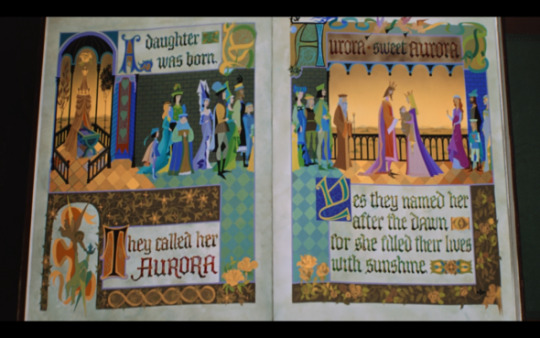

Overall I like the idea of the film being 2D or 3D instead of hybrid. To appease the nostalgic masses, I'll say my film is 2D, though I'm unsure on what period to take from; I loved the Roccoco-inspired animation of "Cinderella" as well as the gothic, High Middle Ages aesthetic of "Sleeping Beauty" (which was an inspiration for the film; sadly, it imitated poor box office success, too). Though in terms of 21st century animation, I'm not sure if there's anything more amazing than the Firebird Suite sequence from "Fantasia 2000."
Plot
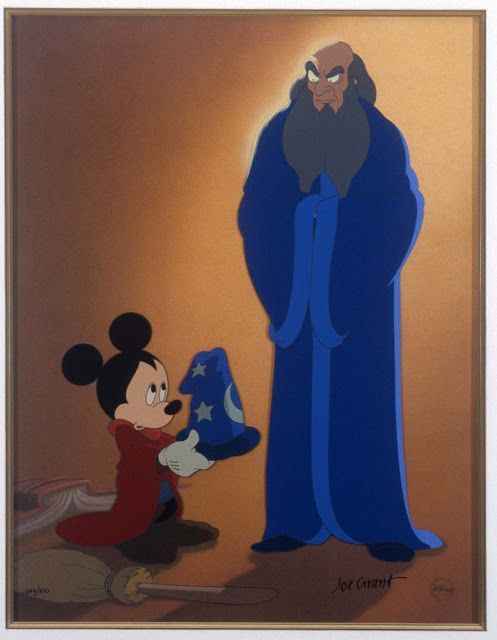
"Every year in a magical kingdom, there is a phenomenon that occurs: the Skyfall, a benevolent occurrence where it appears that all the stars fall from the sky. When it happens, it's said that those who manage to catch the falling star will have their heart's desire granted. Long ago, a young man captured a star, and he asked for the power to grant other's wishes. While his wish was granted, his future--and the kingdom's future--descended into darkness, as the stars fell and never returned to the night sky, leaving it a dark void. Decades later, a young maiden makes a wish that defies all possibility, creating a light that leads to dark shadows that seek to extinguish all hope."
Characters

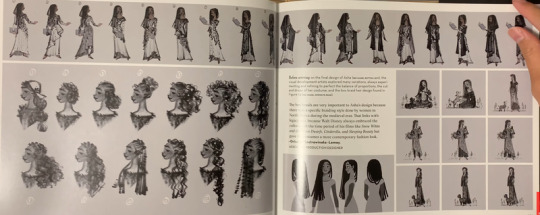

Protagonist--In my rewrite, I'd have our leading lady as a woman of Middle Eastern, Sub-Saharan African, or Romani heritage. I haven't settled on which, though for names I'd go with either Aaliyah or Nimue. She'd be a more mature and less adorkable lead, but still fun to be around, similar to Belle, Pocahontas, and Tiana. Given her role as the sorcerer's apprentice, I'd love a callback to Mickey's red, blue, and silver look. I'm thinking a red dress in a style similar to Aurora's peasant dress, as well as a headband like Jasmine's, only a sapphire blue with silver stars. She's trained as a sorcerer's apprentice since she was a child, with her family's support motivating her to embrace the mystical world in order to grow emotionally and psychologically. She grew up in a broken kingdom filled with corruption, selfishness, and greed. One of the few people who understand right from wrong (according to American society, anyway; I know such terms are subjective), she thinks of stories her grandfather told her about the stars, and how she wanted to see them--but even more than that, she wanted to wish on one to restore her kingdom to it's former glory. While working as a sorcerer's apprentice, she gains magic and tries to help others, but her innate talent attracts people who would seek to take advantage of her, wanting to use her in lieu of their shooting stars. When she summons a star into existence, she attempts to hide him in order to keep him from being destroyed.
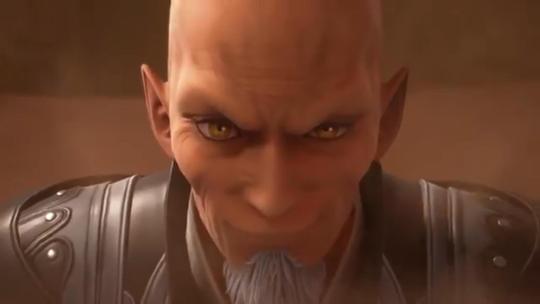
The Sorcerer--Known as Orchus, he was originally a kind young man who existed in earlier days of the kingdom. A gifted magician, he managed to catch a star, and seeing how this was a once-in-a-lifetime occurrence, he wished to be able to catch more stars. His wish was selfless at first, but when he began giving wishes to others, they began to task him with doing it themselves, not bothering to work to capture them themselves, and coming up with the most mundane wishes. After a time, the townsfolk turn greedy, and one person wishes for the stars to fall every night. For a decade or so, stars rain down, to the point where even the royal family succumbs to it's charm, making wishes for grand(er) things. This earns the envy of the common people, who wish to be grander than the king and his family. This creates a war of wishes, which only Orchus manages to quell. By the end of it, all the stars in the sky have been eradicated from the sky, leaving only the moon and the sun, and the kingdom is in pieces. Orchus has become a powerful sorcerer who controls the kingdom, using the royals as the face of it, rebuilding the kingdom as a illustrious-looking location, but seeping with criminal activity and corruption. He believes this is the natural order of things: if people have wishes, they don't ask, but take what they want, and he fixes anything that gets too out of hand. He takes the protagonist under his wings in order to make a successor who can control the kingdom when he's gone, knowing that a rebellion with break out if there's no one to keep the relative "peace." When the protagonist accidentally summons a star, Orchus seeks to destroy it, believing that the world is better off without them--perhaps one day, no one will wish for anything. As you can see, Xehanort from "Kingdom Hearts" was my inspiration.
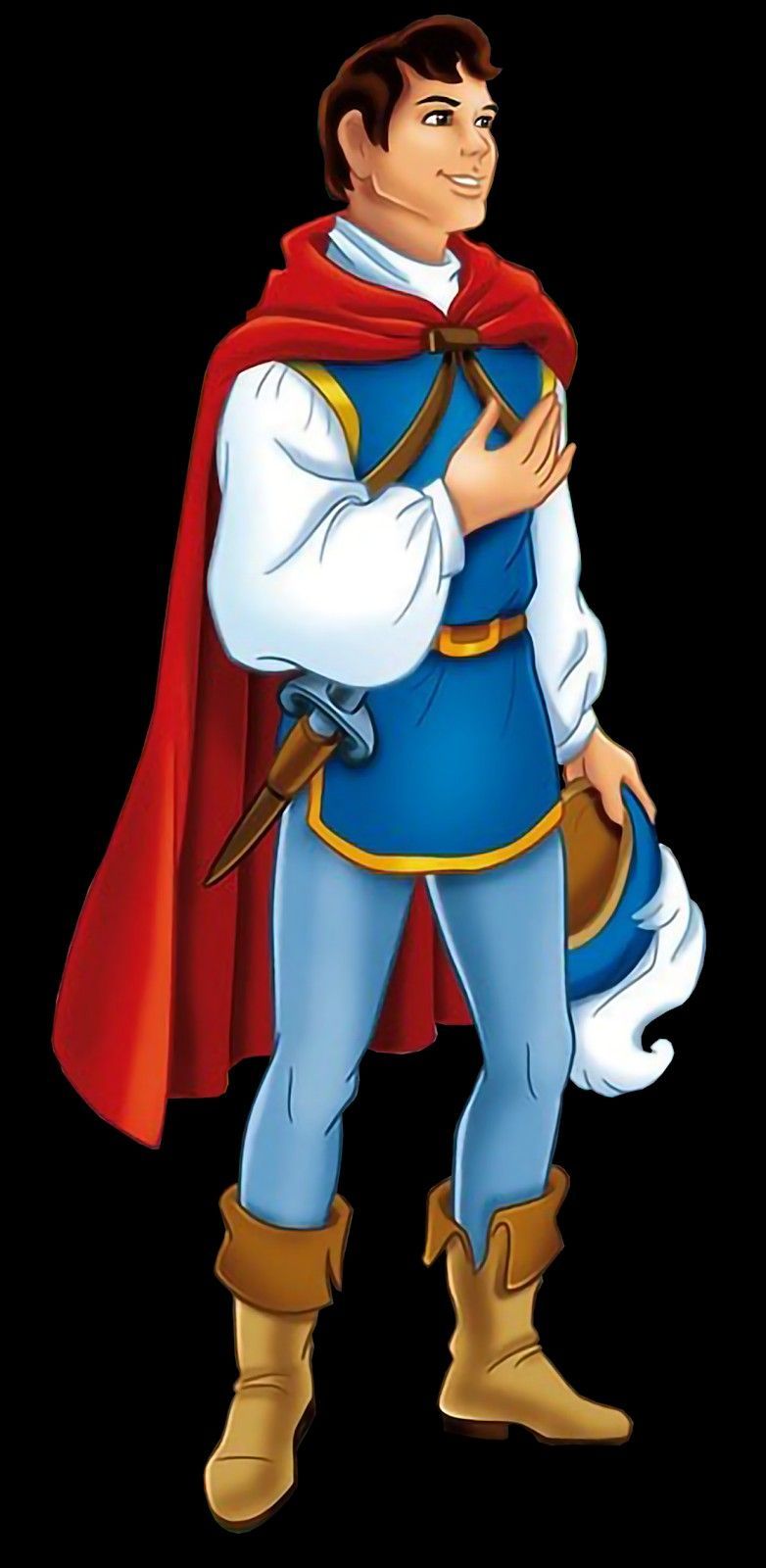
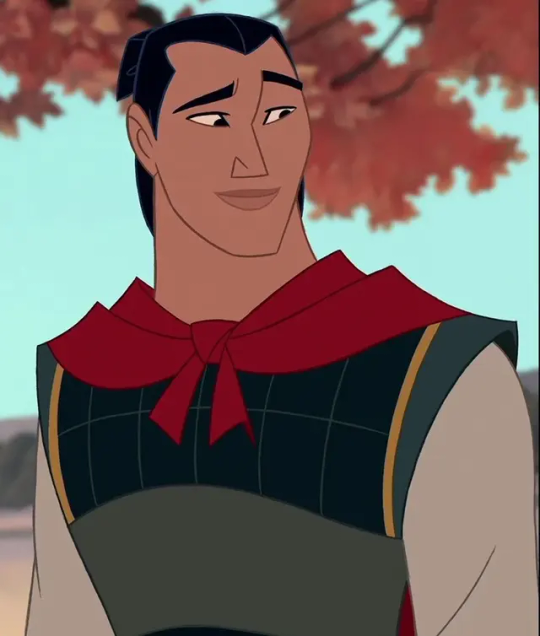
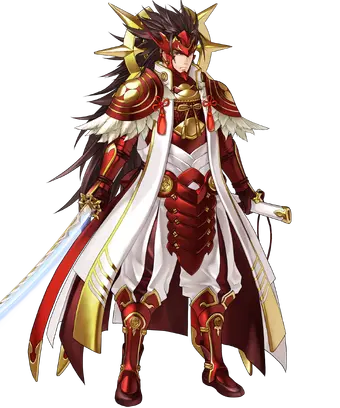
The star prince--Let's name him Orion, and he's not a literal prince; it's just a nickname. Originally I had him planned as being innocent and sweet, similar to Hercules, but I do like the idea of him being a bit feisty, essentially a male version of Jasmine. I'm not sure what his race would be, but I would want a fantasy outfit like Prince Ryoma's supreme samurai look from "Fire Emblem Heroes," as well as perhaps taking fashion aspect from Prince Florian and a physical appearance similar to Li Shang and Aladdin. His voice is ethereal and while kind, he isn't afraid to assert his power if need be. Originally I imagined a youthful, slimmer build, but perhaps a more mature, muscular build similar to Shang and Captain Phoebus would be more appropriate. I'd imagine he dresses in very colorful, moving clothes, perhaps with nature motifs, depending on the situation. A scorpion motif (given his name) would be a nice mainstay to his looks. (I swear, I keep imagining an Inuyasha inspiration for some reason.) He's nonbinary since he's a shapeshifter, but most of the time takes a masculine form and goes by he/him pronouns (but I'd think he'd answer to other ones as well). He attempts to help others, but his powers quickly attract the attention of Orchus, who believes his presence will only cause trouble. As he continues to (sometimes unintentionally) grant the wishes of others, the environment begins to grow malevolent, with the weather and waves antagonizing the kingdom. It soon becomes apparent that the frequent wish granting affects the balance of nature, creating more corruption within the city and destruction that even Orchus cannot repair. As such, Orchus demonizes him as a malevolent being who is keeping stars from the people. It's noted throughout the film that there are other, albeit less powerful ways, of people making wishes besides shooting stars, ie a wishing well.
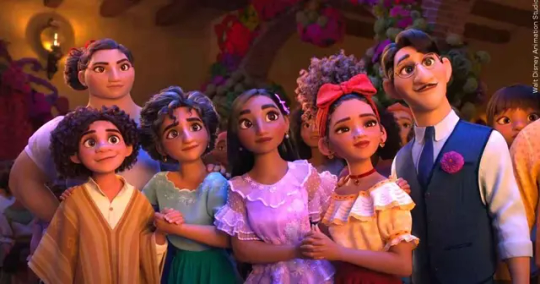
Protagonist's family and friends--I'm kinda iffy on how many people there are in the film so they can all get proper attention and development. I'd like to say both of the protagonist's parents are alive: her mother is like a mix of Gothel and Lady Tremaine, but with good intentions (she's vain, greedy, and a social climber, but deep down she does care about her family, even if she's frequently selfish), and her father is emotionally detached and critical of many of her decisions, being particularly hard on her due to her prestigious position as a sorcerer's apprentice. She has two brothers (I was gonna do sisters too, but no Disney princess has brothers): a younger one who is quite intelligent and crafty, already pessimistic of life and believes you have to lie, cheat, and steal to get anywhere in life, and an older brother who is super naive, easily taken advantage of and must be protected. The family pressures her to let Orion grant their wishes, but they keep wanting more, despite the protagonist's warnings about arousing suspicion. (As you may have noticed, I didn't give them names since I never settled on our protagonist's name/race.)
As for her friends, I'd like to think she has an excitable female friend (similar to Lottie from TPATF) as well as a weary, cautious friend (similar to Nakoma from "Pocahontas"). While her excitable friend is similar to the protagonist's older brother and wants to help those in need, her cautious friend is more concerned with keeping the peace and staying out of trouble. I wanted them to be on two ends of the spectrum in order to show our protagonist two perspectives when facing trouble: trying to get by and trying to help. I don't want there to be a distinct "right/wrong" message with them.


The King and Queen--They would've made kind rulers, but they grew up during the Corruption of the Sky, so they're not the rulers they should be; the king is passive and easily controlled and manipulated, while the queen is insecure and temperamental. They barely get along with each other, but one thing that did seem to quell them was the desire for a child. While they genuinely want children, their corruption makes them paranoid about the future of the throne, and thus a child is as much a need as it is a want.
Music
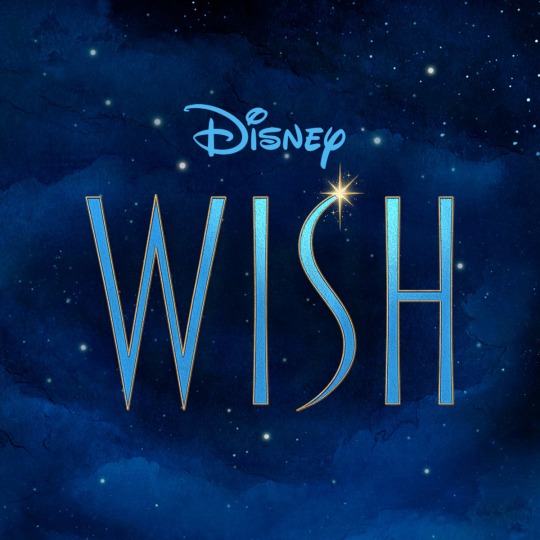
The Anderson-Lopez team or Lin-Manuel Miranda should've done the music for "Wish" and I guess I'll die on that hill. IDK how they would've approached it, but that's just my dream. However, since pop artist Julia Michaels wrote the music, I tried to take inspiration from radio and alternative music and manifest a unique sound for the album. And I'll probably edit this since I don't fully have the plot written out yet, and I suck at song titles.
Stars--Somewhat of a long song, I imagine a gentle beginning, followed by a glorious middle section, before a haunting end. It serves as the prologue for why the sky has no stars. For musical inspiration, I'd say and Utada Hikaru's "Sanctuary" would be the inspiration.
In the Air--In this song, the protagonist sings about her potential to be the next royal magician, and how she considers the idea of becoming a royal advisor. Her family sings this with her to boost her confidence, and Orchus chimes in to hype her up before dousing her confidence. I'd probably take "Colors of the Wind" as an inspiration here.
Your Eyes--A long song between our protagonist and Orion, in which Orion tells her that she should strive to understand other people's perspectives and beliefs, even if she doesn't agree with them, since it'll make her someone the kingdom will look up to. I imagine it as a soft song at first, I imagine it goes full power ballad by the end, kinda like a cross between "You're You" (a deleted song from "Frozen") and "Let it Go."
Royal Favorite--In order to get the protagonist more on his side, Orchus attempts to manipulate her by encouraging her to tell him about the star (which she hasn't, but he has his suspicions). He does so by having the king and queen convince her that everything is fine in the kingdom, and that she should focus on using her magic to give them a child (which would keep her distracted). I imagine this as a guilt/gaslight song that masquerades itself a bubbly and cozy; Gwen Stefani's "This is What the Truth Feels Like" album (specifically "You're My Favorite" and "Loveable") as my inspiration.
Nightfall--I'm thinking it starts off slow and quiet, creeping and making the hair on the back of your neck stand up as Orchus sings calmly as he uses begins to kill those who oppose him, having managed to kill Orion. Honestly I keep thinking "Pray You Catch Me" with this for some reason.
Nobody--Our protagonist is imprisoned and forced to watch as her parents are abused by the townsfolk for standing against Orchus, with their newfound wealth and power being cast aside. She reflects on how she wanted to make a difference, and all that she's done is hurt everyone she's cared about, and Orchus reminds her that she needs to get in line. However, her friends manage to free her, and they tell her that it's good that she's nobody, since everyone says "Nobody will defeat Orchus."
Constellation--After defeating Orchus, his power explodes across the sky, creating a new generation of stars, albeit now they don't fall. Our protagonist reflects on how she misses Orion, but it's for the best, as she worries that he'd be taken advantage of again. During the journey, she reflects on how some wishes should never be granted, and how she believes that some of the people of the kingdom will eventually achieve their own wishes through their own efforts, not it'd take a while before anyone WANTS a wish granted, seeing all the trauma the kingdom's been through.
Lemme know that you think! This was fun! I may edit this a bit more with time. Don't get me wrong, I like my alternate takes, but maybe I'll do more original stories with the bare bones of Disney films. I'm already coming up with a "Frozen" concept!
#disney#disney animation#wish#magnifico#king magnifico#asha#disney princess#cinderella#sleeping beauty#fantasia#aurora#encanto#frozen
31 notes
·
View notes
Text
Soaring Sky Precure and All Stars F Thoughts
The end of January is always a bittersweet time to be a Precure fan as the currently airing series comes to a close and the next series begins the following week at the first of February. I have been watching Precure on a weekly basis for 6 years ever since Hugtto in 2018 and I watched the entire backlog of episodes over roughly 2 years. I wanted to write a post about why All Stars F and Soaring Sky Precure were the perfect anniversary projects.
The staple of any Precure milestone year is a new All Stars movie. They used to be yearly until there were simply too many characters to sustain the purpose of the format so now its saved for special occasions. I'll start by saying All Stars F was phenomenal! The action has never looked better and unlike Memories, it was almost completely in 2D. It's hard to miss when they distill the franchise into its purest form of magical girls beating monsters. The main point I want to focus on is the film's antagonist Cure Supreme.

(note the fake logo, Supreme is merely going through the motions)
They are an unworldly existence who completely destroyed all the cures. Kind of like an end of series boss character. Yet on a whim Supreme wanted to learn more about where a Precure's strength comes from such as why did they try so hard. Supreme recreated earth, gave themselves a mascot, a ton of monsters to defeat including a boss figure, all to essentially live as the main character of a Precure series. It's a very cynical way of looking at the franchise with its repeatable formula. She sees all the parts as simply something they have.
In the climax of the film Supreme is faced with Precure being more than the sum of its parts. They see the hardships, trials, moments of happiness, and the moments of sadness that have occurred in the history of the franchise. A Precure is someone who puts their best foot forward and looks to make a better tomorrow regardless of any obstacles. By splitting part of their power into a mascot and trying to imitate being a cure, Supreme has already taken the first step of their redemption story. In the end, All Stars F uses Supreme to show the audience why Precure is such a long lasting franchise. It might be a repeatable formula, it might appear silly, but ultimately what defines a Precure is someone giving it all their to improve themselves. That is something that can resonate and inspires an audience of all ages which even Supreme is not immune from. The film concludes with Supreme and they're mascot Puka realizing that perhaps together there is more to life when they share experiences.
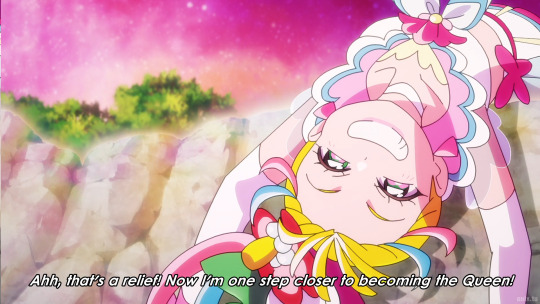
(Manatsu grinning with happiness as her first encounter with Laura replays before their eyes. You can feel how proud she is of having a friend like Laura. It completely changed the trajectory of her life for the better)
If All Stars F is a refresher of Precure's overarching themes, then Soaring Sky Precure is a throwback to the duo dynamic of the early days with a theme of Heroes. We have the central duo of Sora and Mashiro. Sora is an outsider and the team lead. She befriends Mashiro, the human character, who is a kind person who doesn't always have the best self confidence. Together they teach other how to exert themselves more. Both Mashiro and Sora come to learn how acts of kindness come in many forms. Similarly, Tsubasa (first male cure, aspiring knight) and Ageha (adult, nursery school teacher) form a secondary duo. They're mostly stuck in supporting roles for most of the series, but both show anyone can embody the qualities of a Precure in their life. Super heroes don't always wear fleshly capes after all. Elle is a somewhat of a throwback to Luminous as a supernatural entity in the group. She's mostly the insert character for Precure's young target demographic. By becoming Cure Noble it adds to the idea of people in supporting roles being heroes in their own right. Even if they are fallen nobility. Precure's don't let their past define them.
This brings us to the main antagonist Kaiserin. If Sora finds positivity from those around her, then Kaiserin is her foil as someone who has a pure heart but became tainted by negative surrounding circumstances. Kaiserin had been told over and over that strength is everything. These ideals were forced upon her through fabricated events. At the climax with Kaiserin wavering, the dark power went into Sky because surely a hero with strong convictions would desire the ultimate power at all costs to save a friend. But turns out Sora's bond with Mashiro is even stronger than that. Power for powers sake can only go so far and Mashiro never stopped believing in Sora. They both push each other to new heights that senseless strength could never obtain. Kasarin sees this and rejects the power. Giving in to those desires has only stunted her ability to cultivate relationships. She can now get a second chance with her loyal followers now seeking to redeem themselves as well.

The franchise began as "Futari wa Precure" (We are Precure) for a reason. It's about how people can connect and push each other. Whether its someone from another world and a human on earth, an alien being destructive powers, or.... a dog and her pet owner? Sometimes the larger group dynamic and gimmick is more important in modern precures, but going back to those roots from Futari wa Precure every once in awhile is a good reminder of how it runs through every installment to this day.
Tldr - I'm thinking way to hard about a children's television series whose main goal is selling toys. We're lucky it consistently has such strong character writing. I really like when the lead can shout their dream at every turn and grows to embody that ideal. We got spoiled by having a full 50 episode series this year. The power of 4 cour is amazing. Late night anime could only dream of having that much time.
21 notes
·
View notes
Text
A few months ago, when All Stars F first hit theaters in Japan, I saw some posts from the Japanese side of the fandom that Cure Supreme had a stronger form where her skin "turned brown," which confused me. Even the film director, Yuta Tanaka, and character designer, Nishiki Itaoka, acknowledge it as such in an interview:
Cure Supreme exists as a misinterpretation of Pretty Cure
Q: How was Cure Supreme Born?
Tanaka: Cure Supreme is a being that only takes an extremely narrow-minded view on Pretty Cure. They see Pretty Cure as only something strong and cool, simply imitating them. If she only understands those superficial aspects, then she truly doesn't get what makes Pretty Cure so strong and allows them to rise above all hardships. In her mind, isn't that all there is to Pretty Cure? By conveying this, we wanted to reaffirm what Pretty Cure has been depicting for the past twenty years....and that's the kind of image born from her existence.
Itaoka: In terms of the design used in the story, we started by designing Cure Supreme, then split her off to create Puka, then into the strong Supreme ẞ, as well as her pre-transformed state Prim...other characters were derivatively designed from her. The director gave me notes to start drawing from, but I ignored it all at first. When he looked at the final thing, he had a look of "What the heck is this?!" on his face, lol.
What is the "B" that Itaoka-san mentioned?
Tanaka: Though it's not specifically stated in the film, the darker-skinned Cure Supreme was referred to as "Supreme ß" among the staff. The gigantic one is "T." The one we first meet is "Supreme Origin."
Itaoka: Rather than appear cute, ẞ has a totally cool look, or would it be called "devilish"? The highlights in her eyes are rabbit-shaped. It was introduced as a crest on the back of Cure Supreme before she became ẞ. It's an aggressive design unique to the film.
At the time, there wasn't any screencaps or footage of this form, so I wasn't sure what to make of it. Eventually, the anime comic, which took stills from the film to adapt it, released, as well as the Blu-Ray which came out a few days ago, so I got a better look at "Supreme ß."

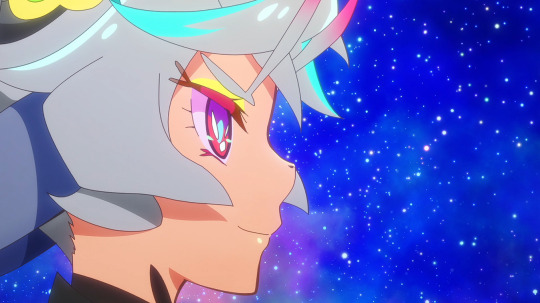


...Yeah. For the record, compare this form with Cure Supreme's base form.

She's usually pale as a ghost, mostly because she's an alien. So why is that, when she gets more evil, she turns brown, like a human complexion of brown? Like what are they trying to get at here? That brown skin, along with her black costume, is an indicator of her sinister power?

I get that she has a further stronger form where she's all giant, monstrous, and purplish-black, but I don't see how brown skin relates to that at all?
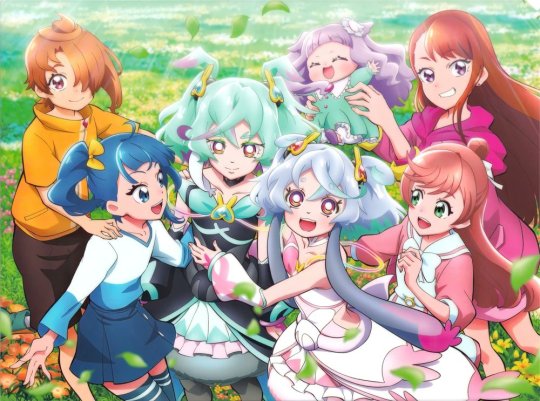
I haven't seen the film, so I don't know the intricacies of the plot, but it seems that the basic gist is that, Cure Supreme starts out as a villain and ends up becoming good by the end. And judging by how she's been portrayed in promotional material, her skin turns back to normal once she becomes good. What a really great message to send.
All Stars F has been the highest-grossing PreCure film at the box office in the franchise's history, and I understand why, it's a huge love letter built across 20 years, but this piece of colorism that can't be ignored acts as a blemish over it, and the franchise as a whole.
I've been a PreCure fan for about ten years now, and it's been one of my top interests. There are a lot of things I love about it, and things I don't. When "Star Twinkle Pretty Cure" first came out five years ago, I was so ecstatic to see it introduce Elena/Cure Soleil, the first Cure on a main team to have dark/brown skin, that I got to see someone like myself in one of my favorite franchises, but more importantly, that children with darker complexions in Japan could grow up seeing themselves in her. That's why I've been so disappointed that after StarPre, they seemingly gave up on continuing racial diversity, and we haven't had someone like Cure Soleil since.
That's why how they treated Cure Supreme in this film stings so much, because if their message is that brown is evil and pale is good, and that the girl who turns brown when she becomes more evil is a "misrepresentation" of what PreCure is all about, what does that say about Cure Soleil, who also cameos in the film fighting against Cure Supreme and her forces?
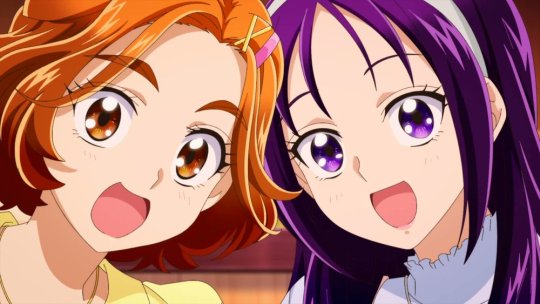
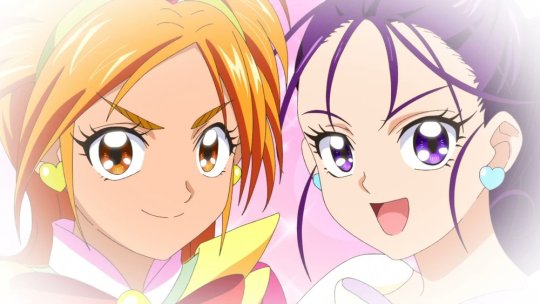


And Cure Supreme is not the only recent example of this franchise's colorism. They did something sort of in the opposite direction. Also last year, "Otona Pretty Cure" aired, and we got several new designs for the Cures from a few older seasons, all grown up...and their skin lightened. Most notably, this happened to Saki/Cure Bloom and RIn/Cure Rouge, and even in the anime itself they literally show a flashback scene of Saki when she's younger and more tan, and Rin as an adult de-ageing to her younger self and becoming slightly more tan. So no, you can't claim it's "just the lighting" here.
What are they trying to say here too? One could say that it's because they stopped playing sports their skin became lighter, but we still see Rin play soccer as an adult, so that doesn't apply to her. I think it's an implication that, as Saki and Rin grew into adulthood, they felt pressured to keep up with societal beauty standards, where lighter skin is "better," so they used skin whitening products. This might have been interesting if they tried to portray it as a form of criticism, but they don't even acknowledge it. Tied with the fact that Saki and Rin lose most of their sporty and tomboyish natures as they grow up, it makes it seem like being tan is something "to grow out of" for women. I find this especially bizzare when OtonaPre had several background characters of diverse skin tones/ethnicities, something I praised them for, and would like to actually see in the yearly PreCure anime.
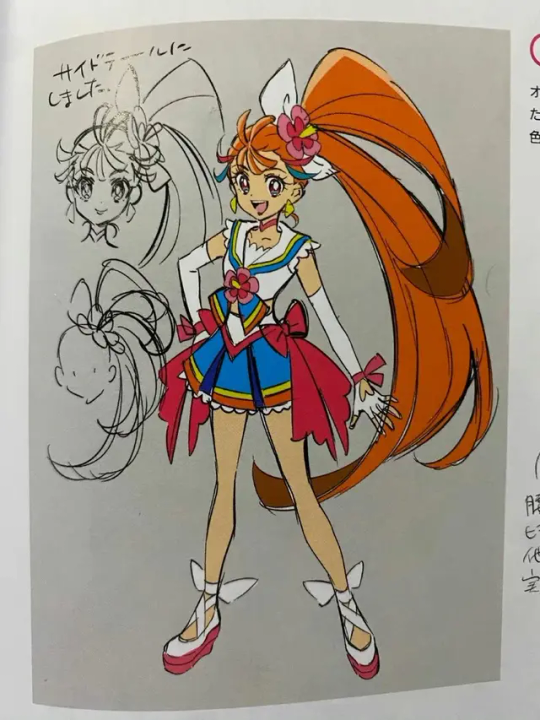
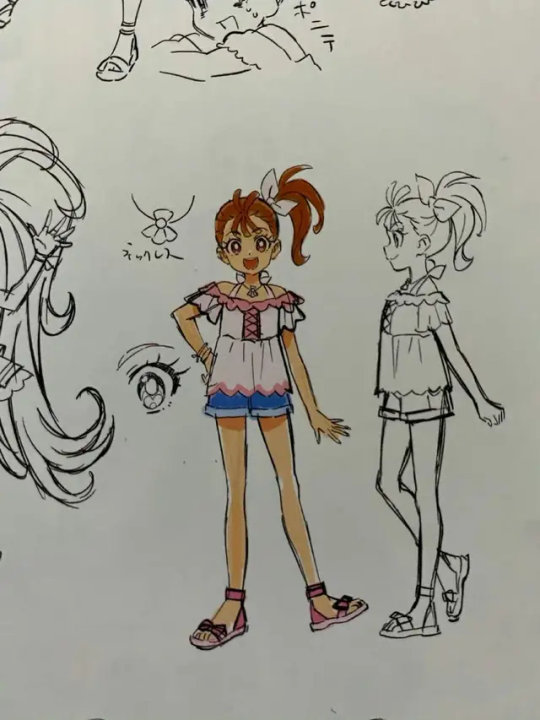
For "Tropical-Rouge! Pretty Cure," we got some concept art of Manatsu/Cure Summer, and a lot of people noticed that she seemed to be slightly more tan in her beta designs. It's a little difficult for me to judge personally, but I'm including this here because TroPre also frustrates me. It's a tropical-themed season and yet almost every character is as pale as a sheet, and you take that in with the fact that this is a season that heavily focuses on makeup. Given the severe amounts of colorism in the makeup industry, as briefly mentioned earlier with skin whitening products, it just shows how little care both Toei and Bandai have about sending a healthy and positive message about skin tone diversity post-StarPre.
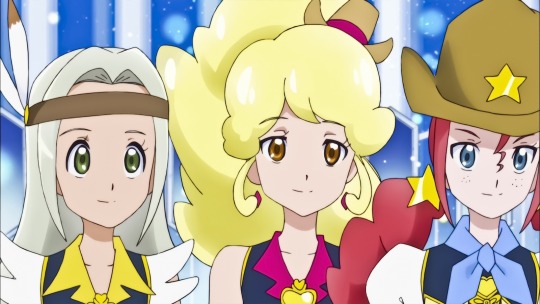
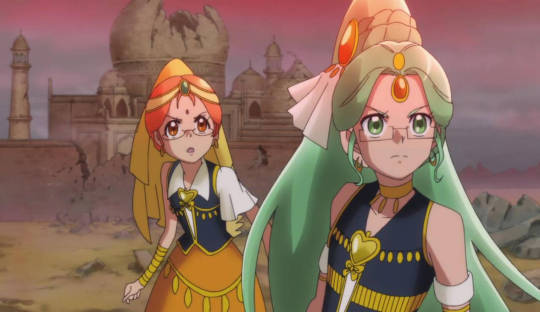
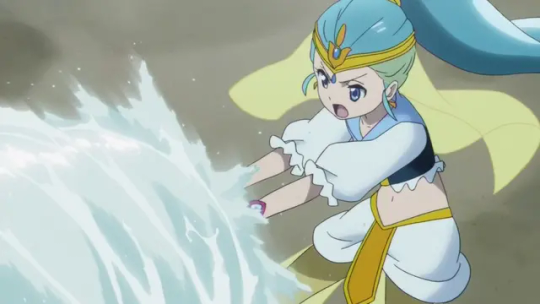

Going further back, in "Happiness Charge Pretty Cure," one of the main themes is a network of "international" Pretty Cure, so we have girls from all over the world, and, how the girls of non-European ancestry are depicted are generally really bad ranging from stereotypes to a lack of skin diversity. In the American Pretty Cure team, the Cure in Native American clothing is barely different in skin tone compared to her white peers. The (Asian) Indian Pretty Cure team are barely brown at all. The Egyptian Pretty Cure is as pale as a sheet. The Hawaiian Pretty Cure team is actually relatively well portrayed in terms of skin tone, and they are how the characters in TroPre should have been designed like. I will concede the fact that there are people from those nations who look just like those girls, but when the majority of your franchise is filled with girls of mostly unchanging pale complexions, would it kill the character designers to branch out more?
There are more examples of colorism in this franchise but I feel those are the most major ones I can bring up. A major theme of PreCure nowadays is that "anyone can become a Pretty Cure," from aliens, to boys, dogs, etc. But I now find that message absolutely patronizing with how most of the Cures end up having the same pale and skinny assembly-line-style body types. It makes what they did with Cure Soleil feel like a miracle, and for that, she remains my most favorite Pretty Cure. She came with her own problems too, such as the merchandise lightening her skin or even turning it orange, the amount of screentime she got in StarPre, the prejudiced fandom not buying merch of her compared to other characters, but with how she remains an anomaly, I have to continue defending her. I want this franchise to do much better, and that's why I care a lot about this issue, as well as getting more masc girls like Akira/Cure Chocolat, more disabled girls like Nodoka/Cure Grace, an actual plus-sized Cure, and so on.
21 notes
·
View notes
Text
Ian McKellen has come to the defense of CATS (2019), and the musical in general, with a concise assessment:
“If you think the film got bad reviews, you should have seen the reviews for the stage show!”
For the majority of the article (or everything pertaining to CATS):
Sir Ian McKellen has reflected on the critical mauling of Cats in a new interview with Attitude.
The acting legend, who plays a theatre reviewer in his upcoming movie The Critic, starred in Cats alongside the likes of Dame Judi Dench and Taylor Swift.
The star played the role of Gus: The Theatre cat in the Tom Hooper-directed flop, which received universally negative reviews.
“I have to temper what I say about Cats,” McKellen told us of the furore four years later.
“When I saw it in the theatre, directed by a good friend of mine, in its previews. I was sat next to the most powerful man in American theatre, who was wondering whether to bring the show to Broadway. Of course, it broke every record.
“At the interval, he said: ‘I don’t think Broadway would accept amateur British attitudes to singing and dancing.’ Almost every critic agreed. If you think the film got bad reviews, you should have seen the reviews for the stage show! His eight-year-old niece on the other side of him said [imitates a New York accent]: ‘I loved it!'”
He went on: “When critics are clearly at odds with the public… A show you know the public are enjoying, or would enjoy, is killed by some negative [reaction]… In the case of Cats, the disapproval seems to be universal.”
#CATS Musical#CATS the Musical#CATS 2019#Ian McKellen#He is completely right#The musical might be near universally derided but it was a smash hit being popular and loved enough to still be running 42 years later#There is obviously something more to all of it than just the stereotypical viewpoints spewed ad nauseam
29 notes
·
View notes
Text
List of Films Turning 10 Years Old in 2024
The Amazing Spider-Man 2
American Sniper
Annie (the remake starring Jamie Foxx)
As Above, So Below
The Babadook (we stan a gay icon)
Batman: Assault on Arkham (a direct continuation of the Batman: Arkham games)
Big Eyes
Big Hero 6
Birdman (won the Best Picture Oscar for this year)
The Book of Life
The Boxtrolls
Boyhood (filmed over the course of 12 years)
Captain America: The Winter Soldier
Chef
Dawn of the Planet of the Apes
Dead Snow 2: Red vs. Dead
Dear White People (the basis for the TV series on Netflix, and made by the same guy)
Dracula Untold (this was Universal’s second attempt at launching the Dark Universe)
The Drop (a crime drama starring Tom Hardy)
Edge of Tomorrow/Live Die Repeat
The Equalizer
Exodus: Gods and Kings (a biblical epic directed by Ridley Scott)
The Expendables 3
The Fault in Our Stars
Foxcatcher
Fury (the war movie with Brad Pitt and Shia LaBeouf)
Get on Up (the James Brown biopic starring Chadwick Boseman)
Godzilla (the 1st film in the MonsterVerse)
Gone Girl
The Grand Budapest Hotel
Guardians of the Galaxy Vol. 1
The Guest
Hercules (the one starring The Rock)
The Hobbit: The Battle of the Five Armies (did you guys know the working title for this movie was “The Hobbit: There and Back Again”?)
How to Train Your Dragon 2
The Hunger Games: Mockingjay Part 1
If I Stay
The Imitation Game (the movie where Benedict Cumberbatch plays Alan Turing)
Inherent Vice
Interstellar
The Interview (the movie that almost caused World War 3)
Into the Woods
Jack Ryan: Shadow Recruit
Jodorowsky's Dune (a documentary about the Dune movie that we never got)
Joe (one of Nic Cage's best movies)
John Wick (the 1st one)
Kill the Messenger
Left Behind (one of Nic Cage's worst movies)
The Lego Movie
Life After Beth
Lucy ((the “humans only use 10% of their brain” movie. Which has since been proven false. Source: https://www.scientificamerican.com/article/do-people-only-use-10-percent-of-their-brains/ )
Maleficent
The Maze Runner
A Million Ways to Die in the Weset
Mr. Peabody and Sherman
Muppets Most Wanted
Need for Speed (Aaron Paul's first project after "Breaking Bad" ended)
Neighbors
Night of the Museum: Secret of the Tomb (the third one. Also one of Robin Williams’ last movies)
Nightcrawler
Noah (a biblical epic directed by Darren Aronofsky)
Non-Stop
The Nut Job
Obvious Child
Oculus (one of the 1st projects from Mike Flanagan)
Ouija
Paddington
Penguins of Madagascar
The Purge: Anarchy
The Raid 2
RoboCop (the reboot that was actually decent)
Selma
Sharknado 2
Sin City: A Dame to Kill For
Son of Batman
St. Vincent
The Taking of Deborah Logan
Teenage Mutant Ninja Turtles (the one produced by Michael Bay. It’s also the one where the Turtles look like aliens)
The Theory of Everything (the movie where Eddie Redmayne plays Stephen Hawking)
Third Person
300: Rise of an Empire
Transformers: Age of Extinction
Tusk
22 Jump Street
Veronica Mars (the film continuation of the TV show)
A Walk Among the Tombstones
What If? (a rom-com starring Daniel Radcliffe)
What We Do in the Shadows (the film that was the basis for the TV show)
When Marnie Was There
Whiplash
X-Men: Days of Future Past
#the amazing spider man#annie musical#clint eastwood#the babadook#batman#batman arkham series#tim burton#big hero 6#birdman#the book of life#captain america#captain america the winter soldier#planet of the apes#dead snow#dracula#live die repeat#tom cruise#the equalizer#denzel washington#ridley scott#the expendables#the fault in our stars#john green#james brown#chadwick boseman#godzilla#monsterverse#gone girl#wes anderson#guardians of the galaxy
17 notes
·
View notes
Text

I just saw Avatar for the first time since it was in theaters 13 years ago. Some quick thoughts.
1) The CGI (mostly) still holds up. Aside from one sequence near the beginning, I don't think you can really tell this was made more than a decade ago. That's pretty damn impressive since CGI often ages poorly.
2) It's a better film that I gave it credit at the time though it's still quite flawed in some ways (more on that in a bit). But after a decade non stop of Marvel, DC, and Star Wars as the dominant box office brands it stands out a lot more and feels a lot more original.

3) It's hard not to perceive part of the backlash against the film among nerds (which I think the success of Way of Water has shown did not reach into the mainstream) comes from the fact that this film makes the Colonial Marines from Aliens the bad guys. Unequivocally. As someone who thought the Marines were never the most interesting part of Alien or its imitators that doesn't bother me as much.
4) I think another reason people (myself included) backlashed against the movie is that it is overwhelmingly, heart achingly sincere. There is not a sarcastic or self-mocking bone in Avatar's body. Everything it does is done with deliberate, open hearted purpose and frankly a lot of us nerds are uncomfortable with that! But again, after a decade of films aping the wink wink wisecracking of 2012's Avengers, one might argue Avatar's bleeding heart is actually a major plus in its favor.
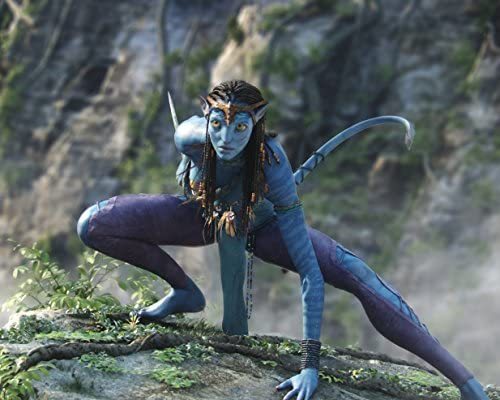
5) That being said, it's not flawless and one bit of criticism from 2009 remains quite relevant: the film, while unequivocally anti-colonialist, is made with an entirely white lens. The Na'vi are the good guys, yes, but with the exception of Neytiri (and only barely to be honest), they're never the *heroes*. The greatest ass kicking moments, the greatest triumphs and heartbreaking moments belong not to them but to the humans like Jake, Grace, Norm, and Trudy. The Na'vi are sympathetic, but we don't see anything from their point of view: they're accessories to the human characters' emotional journey.
6) That being said, if this was the first movie you saw about colonialism I think you'd be hard pressed to come away from it thinking that was a *good* thing. Cameron is not the least bit subtle about painting Quaritch and RDA as the bad guys nor about drawing comparisons between them and not only historical colonizers but the modern U.S. military (see point 3).
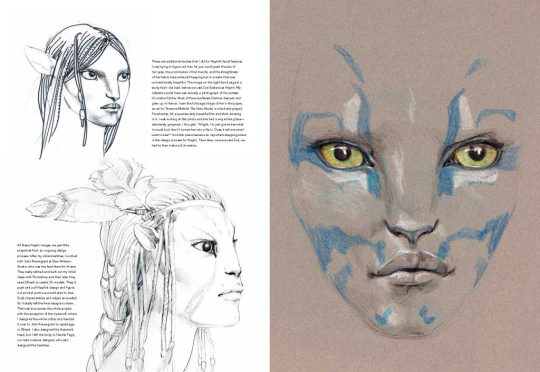
7) One thing I appreciate a lot more now than I did in 2009 is the sheer volume and quality of worldbuilding. It's clear this was a passion project for Cameron and he put every bit of detail he could cram in. It's also a very notable early example of a conlang that isn't either Tolkien or Klingon.
8) Lastly, the movie struck me as faintly religious which is interesting. I don't believe Cameron belongs to any religion but it struck me that Eywa very much represents an idea he would like to believe is true, even if he doesn't actually believe in it.
Anyhow, I might do a more detailed analysis after I watch Way of Water, but for now I'll end by saying Avatar remains a complicated but very well made movie, with a good message muddled somewhat by an exoticizing lens.
134 notes
·
View notes
Text
Excerpts
Stars Jonathan Groff and Karan Soni and director Roshan Selthi on the joy of making “A Nice Indian Boy,” joking: “An independent film needs a famous white person to get made.”
When Jonathan Groff met with director Roshan Sethi about a role in the romantic comedy A Nice Indian Boy, he asked Sethi to cast Karan Soni as his love interest. Groff assumed Soni was straight, but he’d seen the Deadpool actor in Sethi’s first movie, 7 Days, and liked his vibe. As it turns out, Groff’s request had already been granted: Not only is Soni gay, but he’s been dating Sethi since 2018. Sethi thought he’d have to work to court Groff—“An independent film needs a famous white person to get made,” he half-jokes—when in actuality Groff was already envisioning the exact film that now exists.
To hear the trio talk about A Nice Indian Boy is to hear tales of kismet and glee (Groff pun intended). “It felt like an emotional throuple,” Soni tells The Daily Beast’s Obsessed, also half-joking. The movie unleashed its charm at the SXSW Film and TV Festival on Tuesday, capping off an intensely personal experience for Sethi and his cast.
A Nice Indian Boy, initially a play by Madhuri Shekar, is built on a meet-cute at a local temple. During prayer, down-on-his-luck doctor Naveen (Soni) catches the eye of a dreamy photographer named Jay (Groff), and soon his wish for romance has been fulfilled. Jay was adopted by an Indian family and immersed himself in their culture, but he’s far more comfortable in his sexuality than Naveen, who avoids introducing Jay to his folks (Zarna Garg and Harish Patel) until they’re engaged. It’s Meet the Parents: Hindu Edition. But not only is he bringing a boy home—he’s bringing a white boy home. With that, A Nice Indian Boy goes from a romantic comedy to a comedy of manners to a spectacular wedding comedy.
Together, Sethi and Soni wrote 7 Days, a straight rom-com co-starring Geraldine Viswanathan. That was a warm-up act for A Nice Indian Boy, a movie that begins with one dazzling Indian wedding—that of Naveen’s sister (Sunita Mani)—and ends with another. When producers sent Sethi the film script adapted by Eric Randall (In the Dark), it was like clouds parting. Here was something he and Soni had contended with their entire lives: being gay in a culture that loves elaborate marriage rituals as long as they don’t involve two men or two women. If 7 Days was like their senior year of high school, Soni says, A Nice Indian Boy was their freshman year of college, full of new liberation.
“Halfway through making the movie, Roshan was like, ‘This might be the most personal thing we ever do, so we should really soak it all in,’” recalls Soni, whose other credits include Miracle Workers and Always Be My Baby. “This checks so many boxes of our experience, and to do it together is so rare. I remember him saying, ‘We should experience and feel everything,’ which is also Jonathan rubbing off on us, because that’s all this man does. He is in the moment. He’s never on his phone in between takes. He loves to talk about things. We want to be more like Jonathan.”
Groff says he picked up the no-phones-on-set thing from Keanu Reeves, who would strike up conversation between takes while they were shooting The Matrix Resurrections. Jay is the more sanguine character in the film, so Groff’s grounding presence was life imitating art. But even if the Broadway veteran helped to secure the project’s financing, he wasn’t the biggest celebrity around. That honor belonged to Garg, the comedian, podcaster, and TikTok superstar who recently opened for Tina Fey and Amy Poehler’s tour. During the Vancouver production, locals stopped their cars in traffic to catch her attention. “It was harder for her to go places than anyone,” Sethi laughs.
Not everything was uplifting, though. Sethi reached out to various Hindu religious leaders to find a consultant for the wedding scenes. Not a single Vancouver priest—including one billed as “the most liberal pundit in Canada,” who apparently sent Sethi a homophobic slur in response—agreed to participate. However crushing, such reactions underscored the importance of a film that’s very much about internal and external acceptance. Sethi and Soni eventually enlisted a priest based in Malibu who FaceTimed them from his stylish convertible.
For Groff, aspects of A Nice Indian Boy were like an analog to Looking, the swoony HBO series that also featured amorous walk-and-talks. “I could kind of be transparently myself while playing the character and not feel inhibited," he says. "Karan talked about that, too. When we get to do something gay, there’s this feeling of extra freedom. When it’s a gay story, it feels ultra-personal.”
Independent filmmakers like Sethi are reinvigorating a genre that has long attracted gay audiences without featuring them in principal roles.
“Even though there were financial and logistical obstacles that kept cropping up, it was an experience of pure joy,” Sethi says. “Halfway through, I was like, ’Maybe it will never be this good again.’ We did it with people we love about a subject we love.”
18 notes
·
View notes